Researchers recently modeled the transmission of COVID-19 within an isolation room at the Royal Brompton Hospital in London, U.K. Their goal was to explore the optimal room layout to reduce the risk of infection for health care staff. To accomplish this, they used an adaptive mesh finite-element computational fluid dynamics model to simulate 3D spatial distribution of the virus within the room — based on data collected from the room during a COVID-19 patient’s stay. They share their findings and guidance in Physics of Fluids.
Tag: Disease Spread
Preparing for Coming RSV, Influenza Epidemics
Nonpharmaceutical interventions slowed the spread of COVID-19 and other infectious diseases but now, as NPIs are lifted, countries are seeing a resurgence in several respiratory diseases. In Chaos, scientists, using data from Hong Kong to develop their model, describe a threshold control method that can be used to predict the best time to lift NPIs without overwhelming the hospital systems when these other respiratory diseases inevitably surge back. They found that reintroducing NPI measures when a threshold of 600 severe cases is reached could ensure that the hospital system in Hong Kong is not overwhelmed by severely infected patients.
Researchers Fix ‘Fundamental Flaw,’ Improving Pandemic Prediction Model
Researchers identified and addressed a flaw in a commonly used pandemic model that can cause the model to severely underestimate disease spread.
The Interplay Between Epidemics, Prevention Information, and Mass Media
When an epidemic strikes, more than just infections spread. As cases mount, information about the disease, how to spot it, and how to prevent it propagates rapidly among people in affected areas as well.
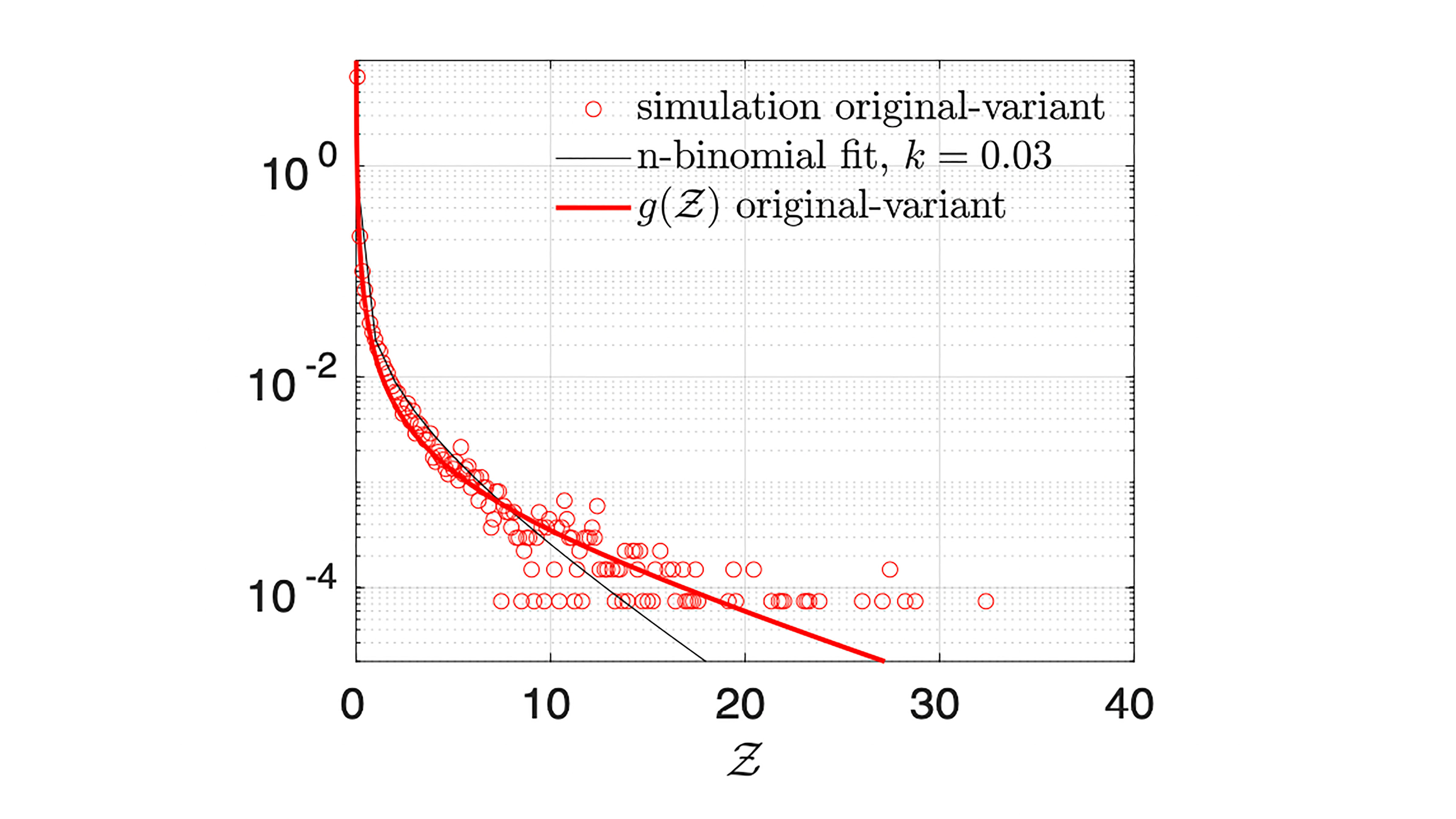
COVID-19 Superspreader Events Originate from Small Number of Carriers
In Physics of Fluids, researchers create a model to connect what biologists have learned about COVID-19 superspreading with how such events have occurred in the real world. They use occupancy data to test several features ranging from viral loads to the occupancy and ventilation of social contact settings. They found that 80% of infections occurring at superspreading events arose from only 4% of those who were carrying the virus into the event. The top feature driving the wide variability in superspreading events was the number of viral particles found in index cases.
Normal Breathing Sends Saliva Droplets 7 Feet; Masks Shorten This
The WHO and the CDC recommend keeping a certain distance between people to prevent the spread of COVID-19. These social distancing recommendations are estimated from a variety of studies, but further research about the precise mechanism of virus transport is still needed. In Physics of Fluids, researchers demonstrate normal breathing indoors without a mask can transport saliva droplets capable of carrying virus particles to a distance of 2.2 meters in a matter of 90 seconds.

Georgia Tech Faculty Available to Speak About the Covid-19 Crisis in India
The Georgia Institute of Technology has faculty members who can offer perspective on the alarming Covid-19 infections and deaths in India where cases have exceeded 20 million. Devesh Ranjan, associate chair in the George W. Woodruff School of Mechanical Engineering,…
Women had “alarmingly high rates” of mental health problems during start of the pandemic
With research increasingly showing the COVID-19 virus is transmissible via smaller droplets suspended in air, there is growing concern current guidelines of mask wearing and social distancing are insufficient in indoor environments where people tend to be in close quarters. In AIP Advances, researchers in India show social distancing is equally as important as mask wearing when people indoors are just breathing or participating in normal conversation, even when there is no risk of coughing or sneezing.
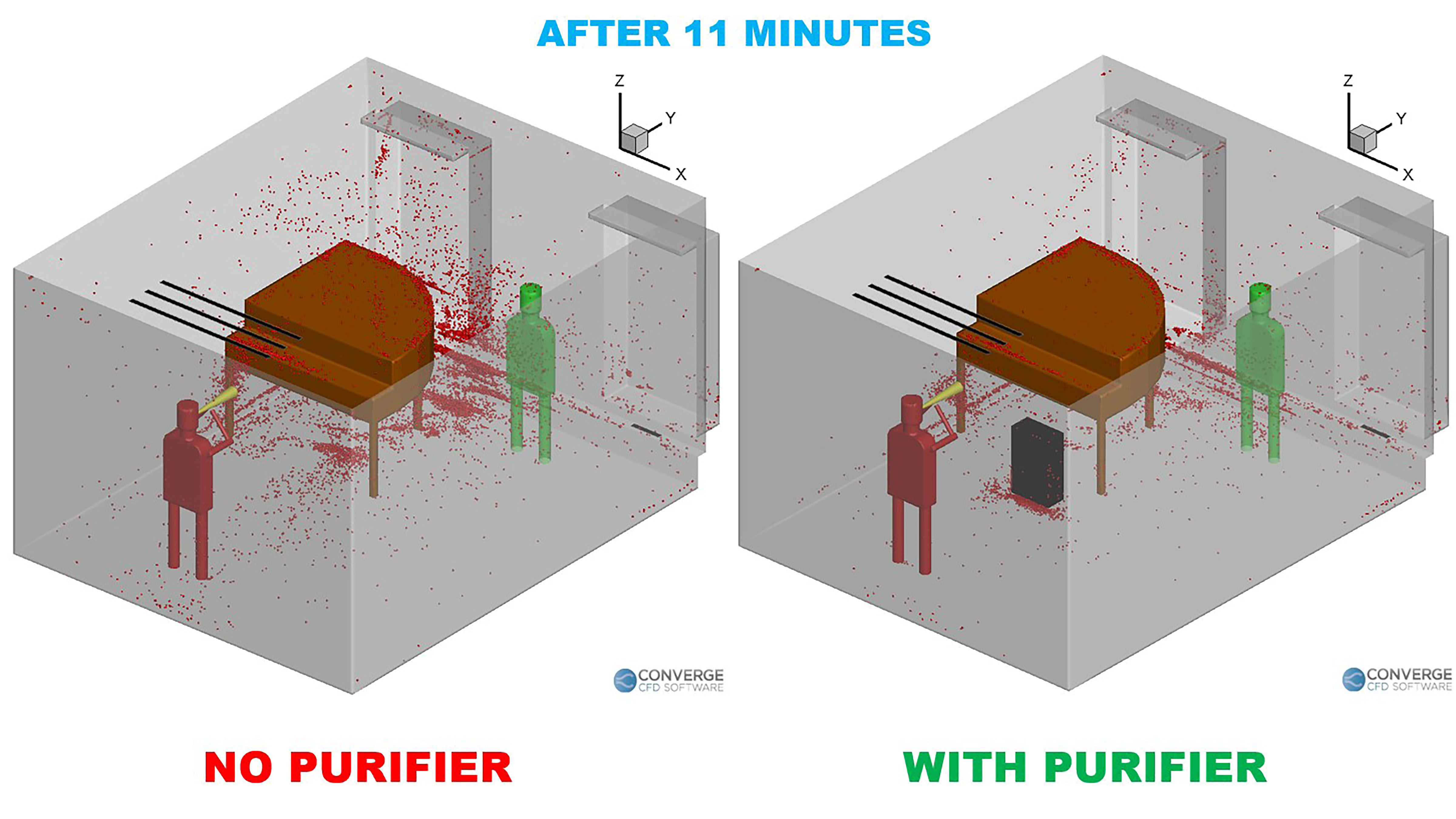
Strategic Air Purifier Placement Reduces Virus Spread Within Music Classrooms
The University of Minnesota School of Music was concerned about one-on-one teaching during the COVID-19 pandemic and wondered if it should supplement its ventilation system with portable HEPA air purifiers. So, school officials reached out to Suo Yang, a professor within the College of Science and Engineering, and his team to figure it out. In Physics of Fluids, Yang and the researchers describe their work to predict how virus particles spread within a music classroom.
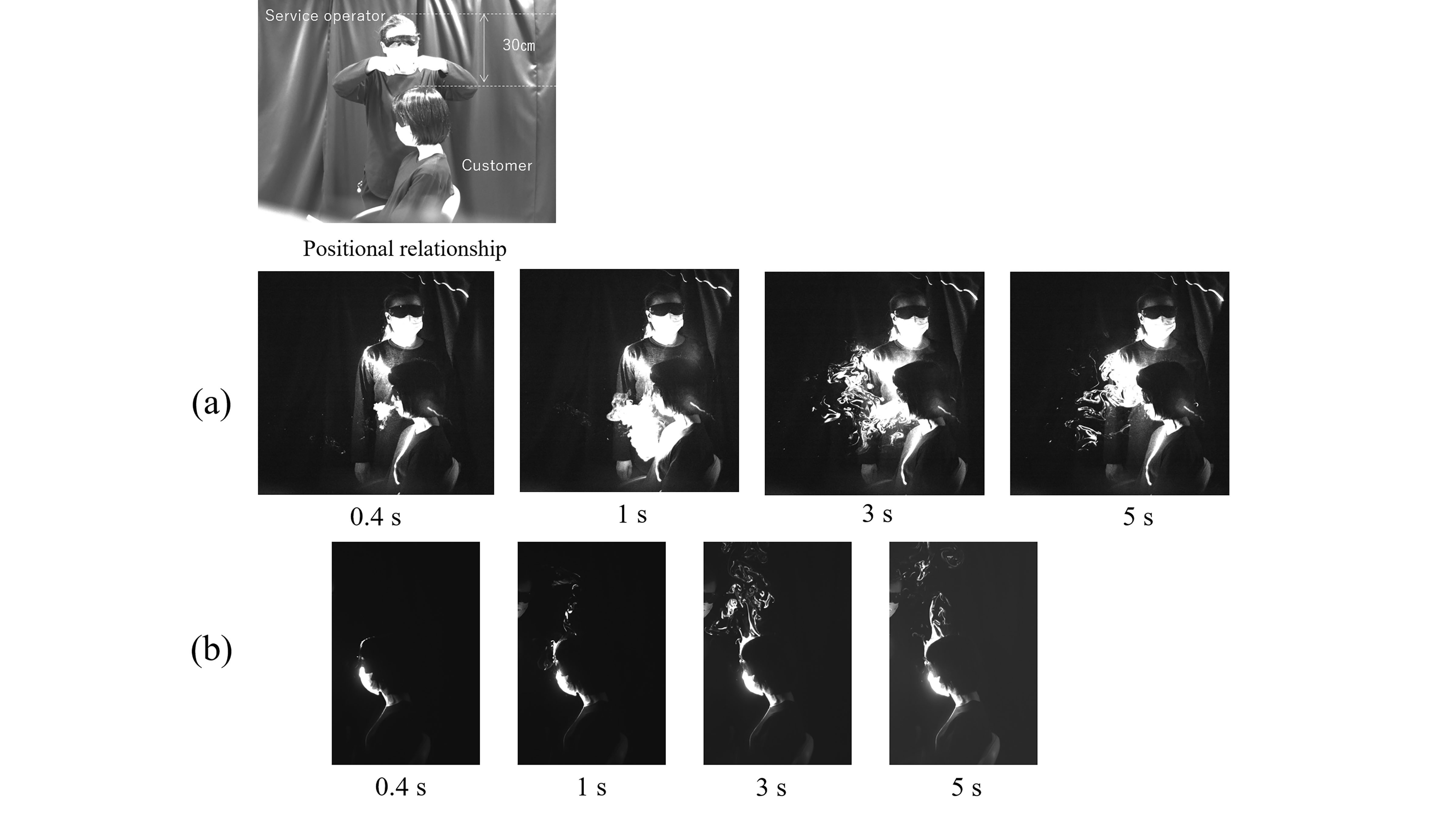
Simply Speaking While Infected Can Potentially Spread COVID-19
COVID-19 can spread from asymptomatic but infected people through small aerosol droplets in their exhaled breath. Most studies of the flow of exhaled air have focused on coughing or sneezing; however, speaking while near one another is also risky. In Physics of Fluids, scientists used smoke and laser light to study the flow of expelled breath near and around two people conversing in various relative postures commonly found in the service industry, such as in hair salons, medical exam rooms, or long-term care facilities.
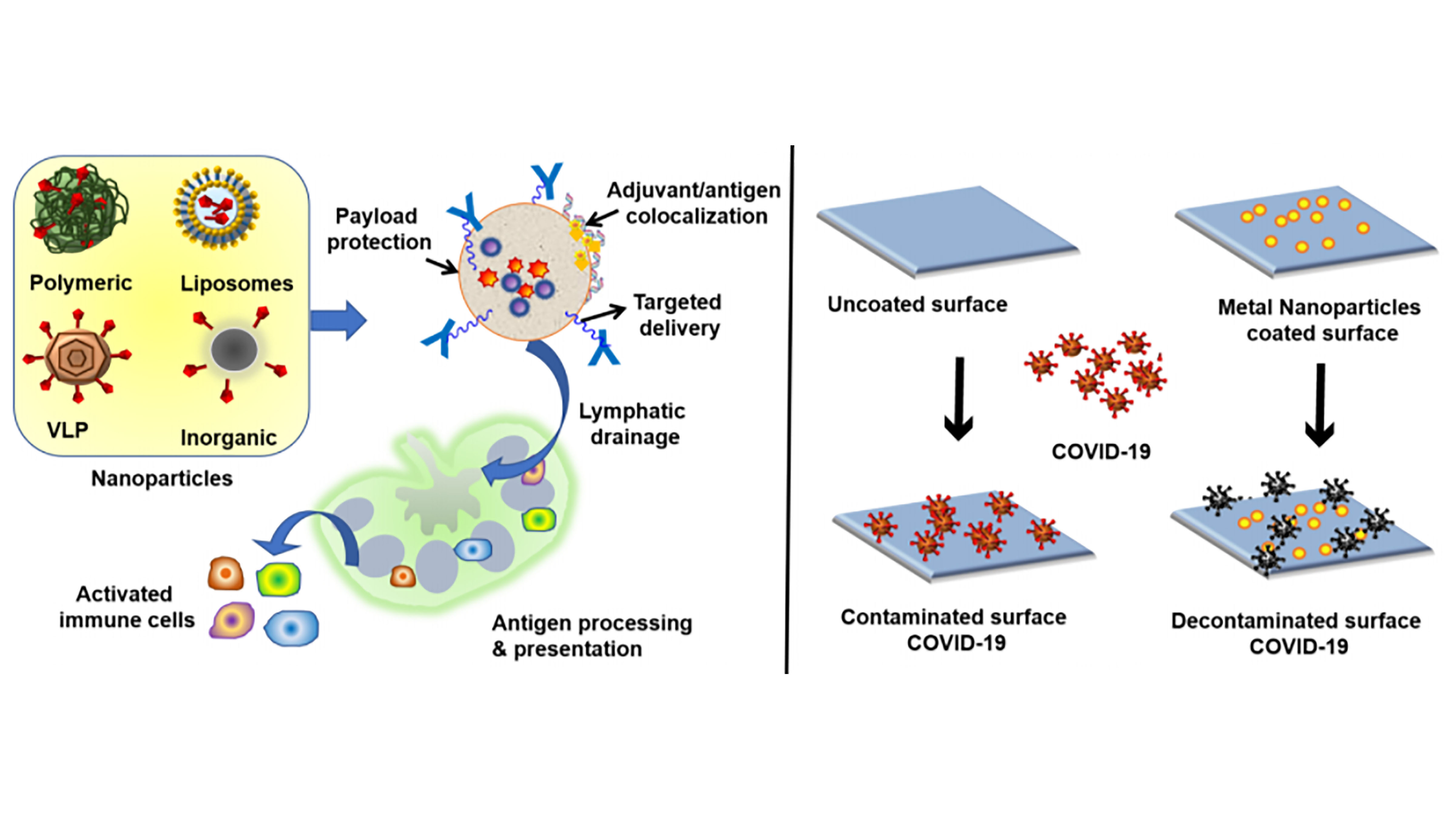
Biomaterials Could Mean Better Vaccines, Virus-Fighting Surfaces
Advances in the fields of biomaterials and nanotechnology could lead to big breakthroughs in the fight against dangerous viruses like the novel coronavirus that causes COVID-19. In APL Bioengineering, researchers from the Indian Institute of Science describe possibilities being explored by scientists, combining biomaterials and nanotechnology, to make vaccines more effective and build surfaces that could fight and kill viruses on their own.
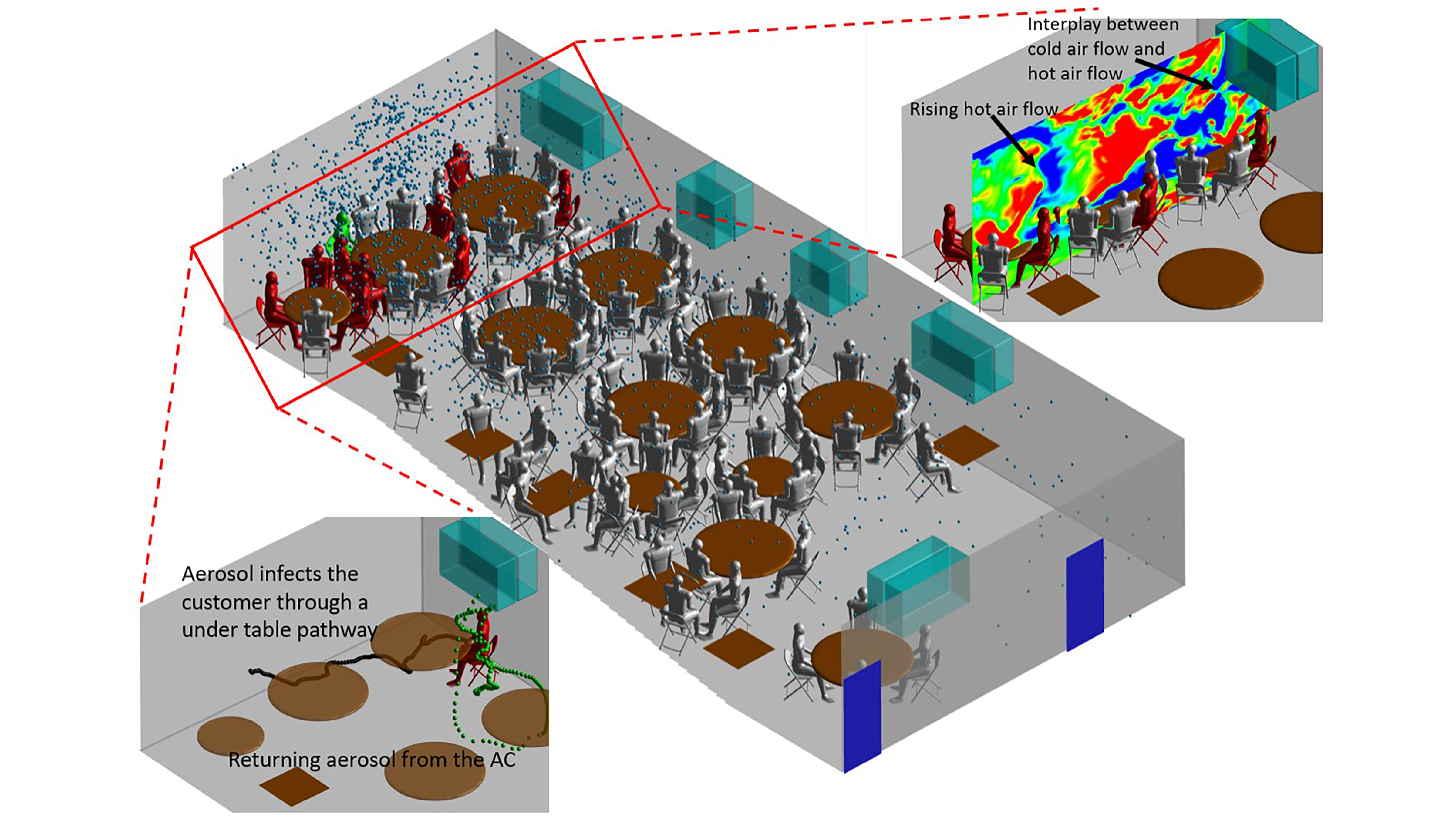
Advanced Simulations Reveal How Air Conditioning Spreads COVID-19 Aerosols
A restaurant outbreak in China was widely reported as strong evidence of airflow-induced transmission of COVID-19, but it lacked a detailed investigation about exactly how transmission occurred. In Physics of Fluids, researchers at the University of Minnesota report using advanced simulation methods to capture the complex flows that occur when the cold airflow from air conditioners interacts with the hot plume from a dining table and the transport of virus-loading particles within such flows.
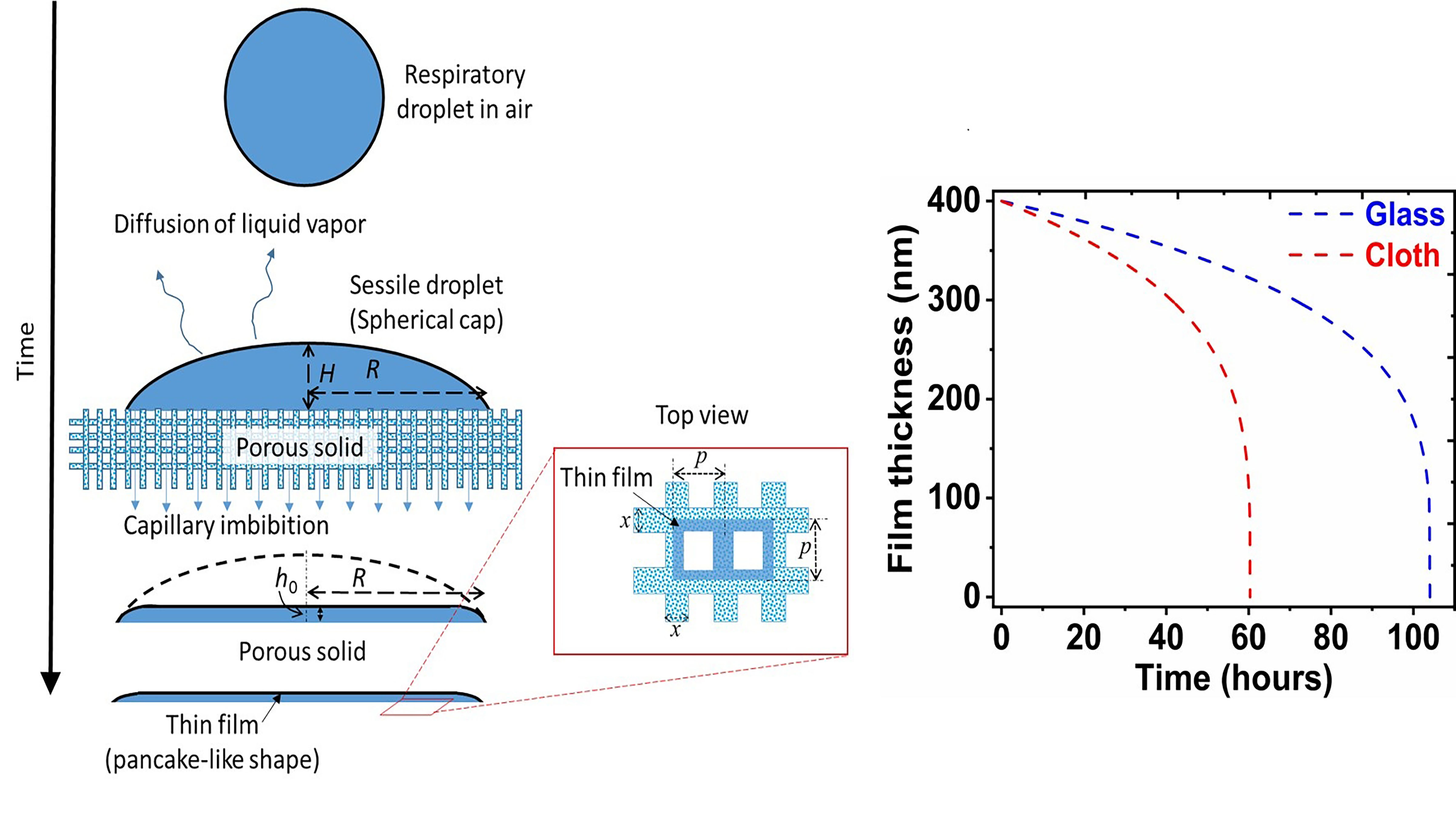
Porous Materials Unfavorable for Coronavirus Survival
As COVID-19 spreads via respiratory droplets, researchers have become increasingly interested in the drying of droplets on impermeable and porous surfaces; surfaces that accelerate evaporation can decelerate the spread of the virus. In Physics of Fluids, researchers show a droplet remains liquid for a much shorter time on a porous surface, making it less favorable to survival of the virus. On paper and cloth, the virus survived for only three hours and two days, respectively.

Air Purifiers May Do More Harm Than Good in Confined Spaces with Airborne Viruses
The positions of air inlets and outlets in confined spaces, such as elevators, greatly affect airborne virus transmission. In Physics of Fluids, researchers show air purifiers may actually increase the spread. They use ultraviolet radiation to kill viruses and other microbes, but they also circulate air, sucking it in and exhausting cleaned air. This adds to overall circulation.
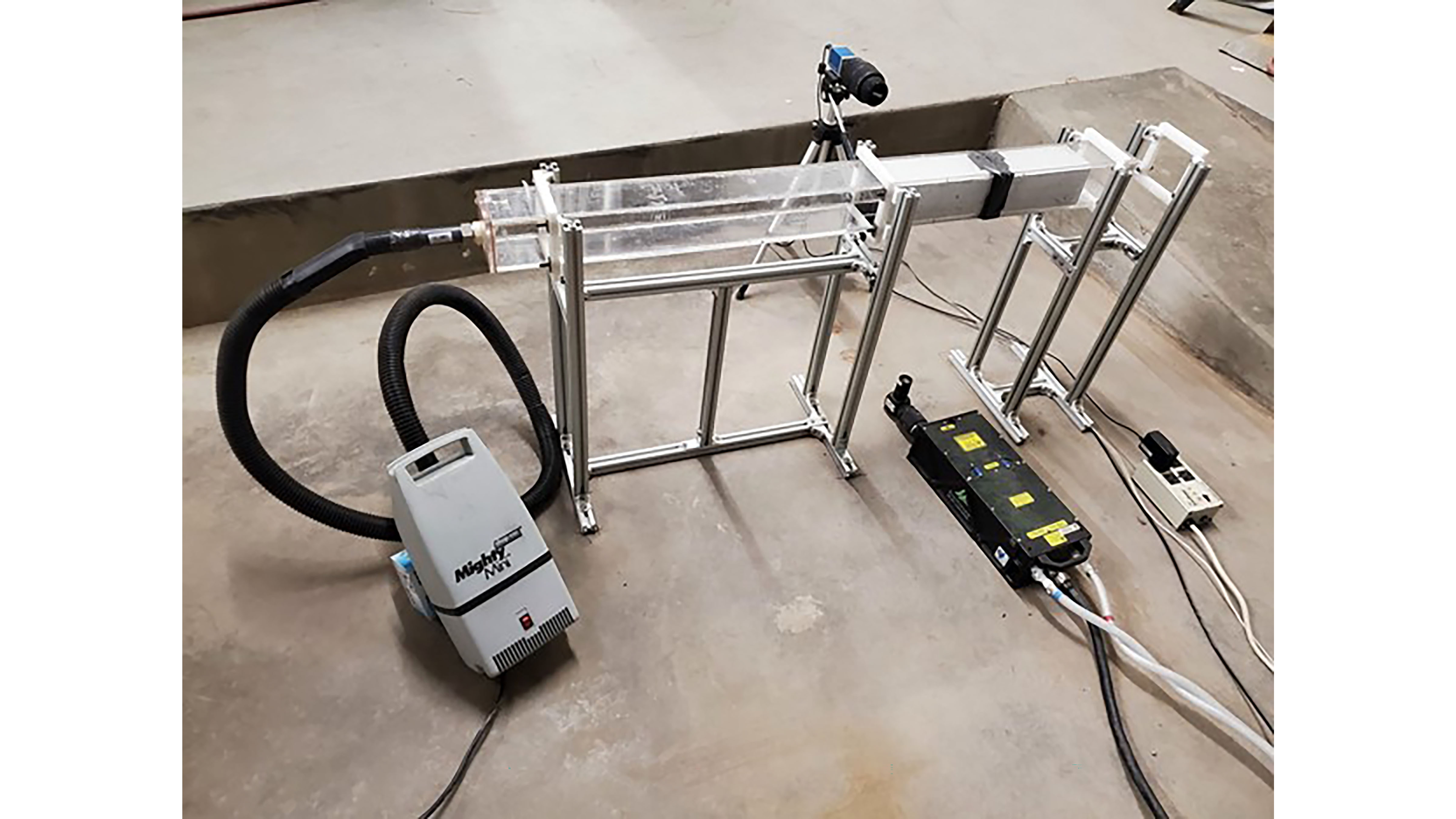
Masks Not Enough to Stop COVID-19’s Spread Without Distancing
Simply wearing a mask may not be enough to prevent the spread of COVID-19 without social distancing. In Physics of Fluids, researchers tested how different types of mask materials impacted the spread of droplets that carry the coronavirus when we cough or sneeze. Every material tested dramatically reduced the number of droplets that were spread. But at distances of less than 6 feet, enough droplets to potentially cause illness still made it through several of the materials.
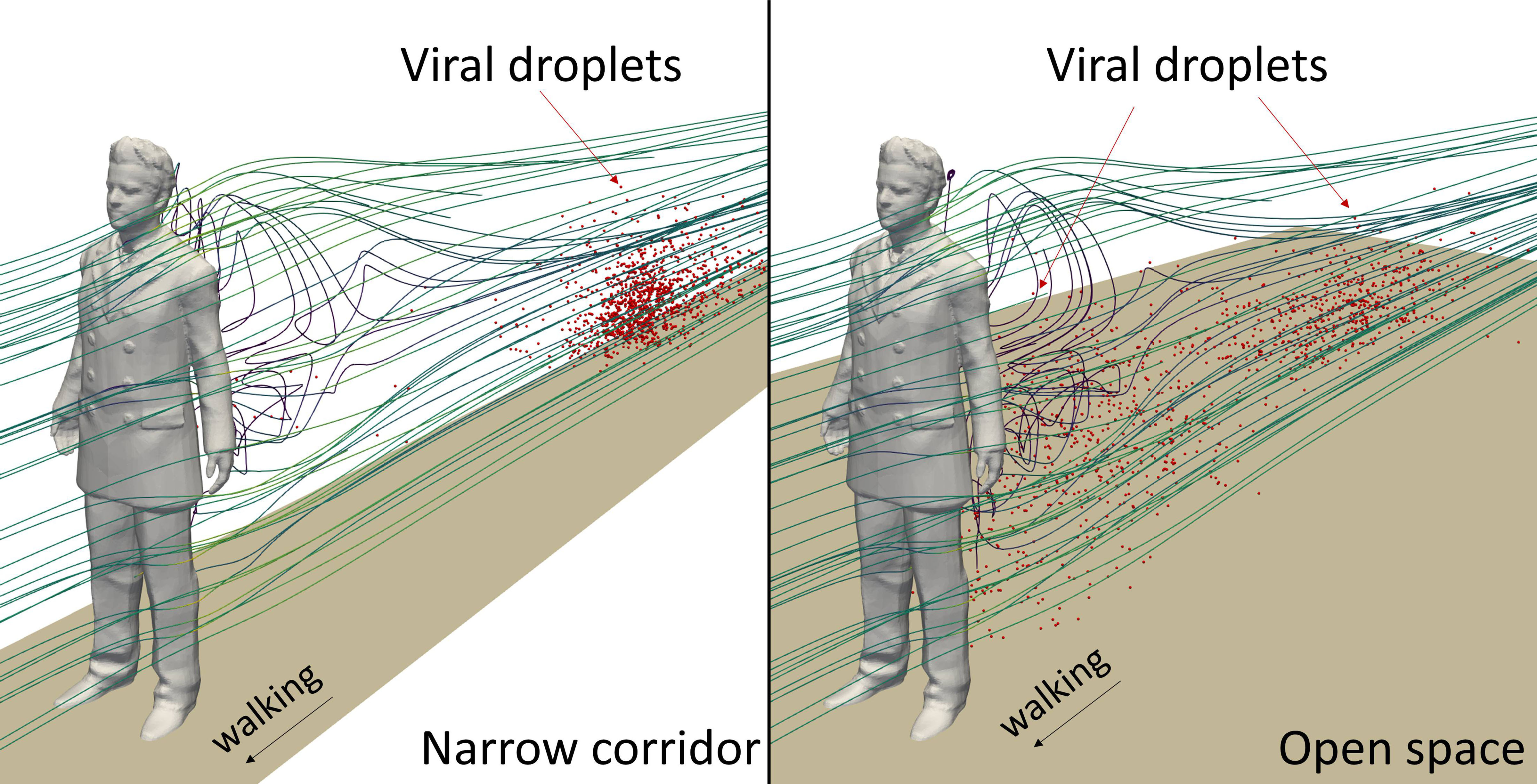
Fast Walking in Narrow Corridors Can Increase COVID-19 Transmission Risk
Simulations have been used to predict droplet dispersal patterns in situations where COVID-19 might be spread and results in Physics of Fluids show the importance of the space shape in modeling how droplets move. The simulations are used to determine flow patterns behind a walking individual in spaces of different shape. The results reveal a higher transmission risk for children in some instances, such as behind quickly moving people in a long narrow hallway.
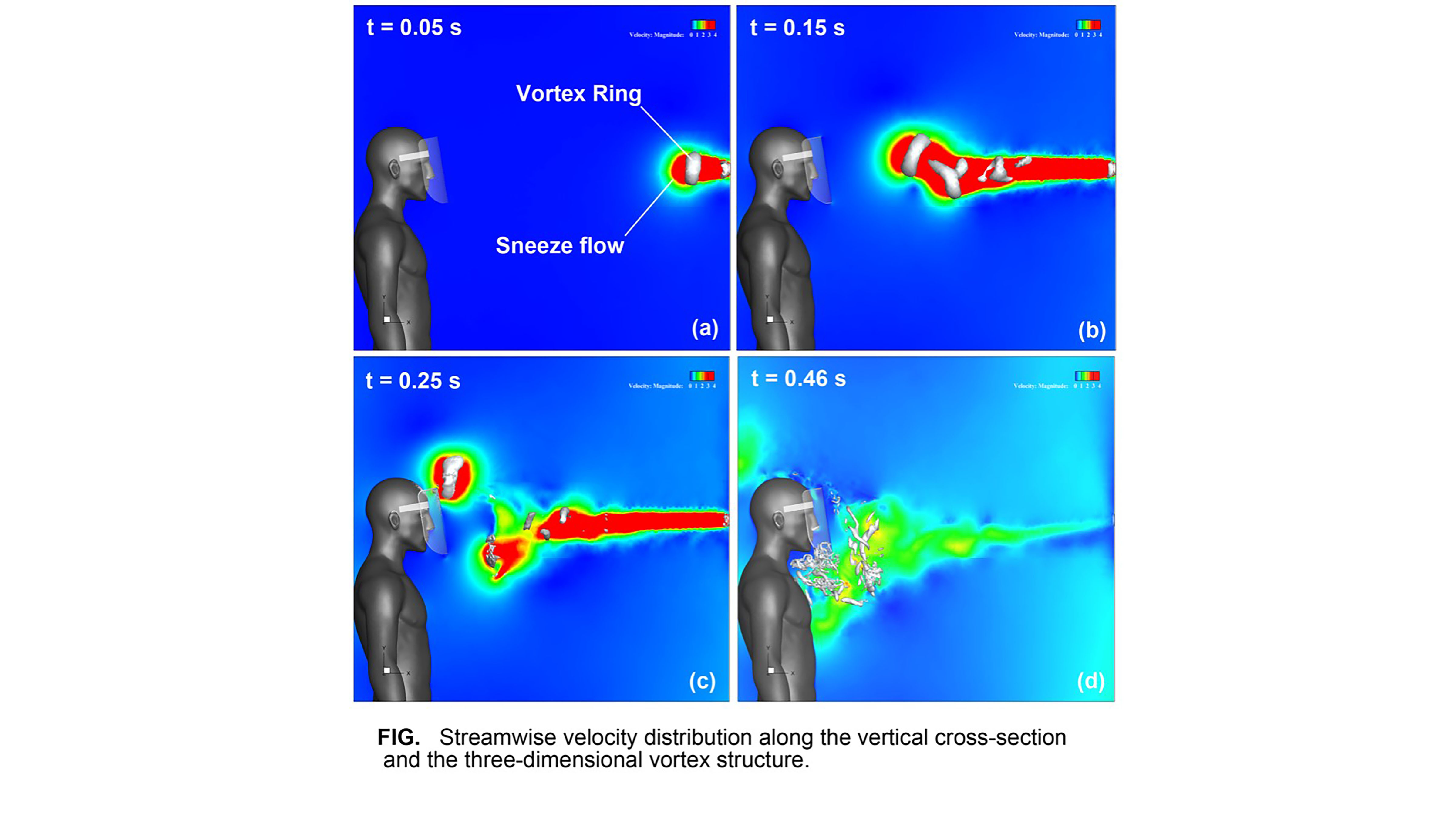
Face Shields No Match for Sneeze Vortex Rings
Do face shields provide enough protection to the wearers against COVID-19 if they don’t also wear a mask? No. But researchers in Japan are working to create face shields safe enough to be worn alone. In Physics of Fluids, Fujio Akagi and colleagues describe their work to gain a better understanding of what happens to the airflow around a face shield when someone nearby sneezes.
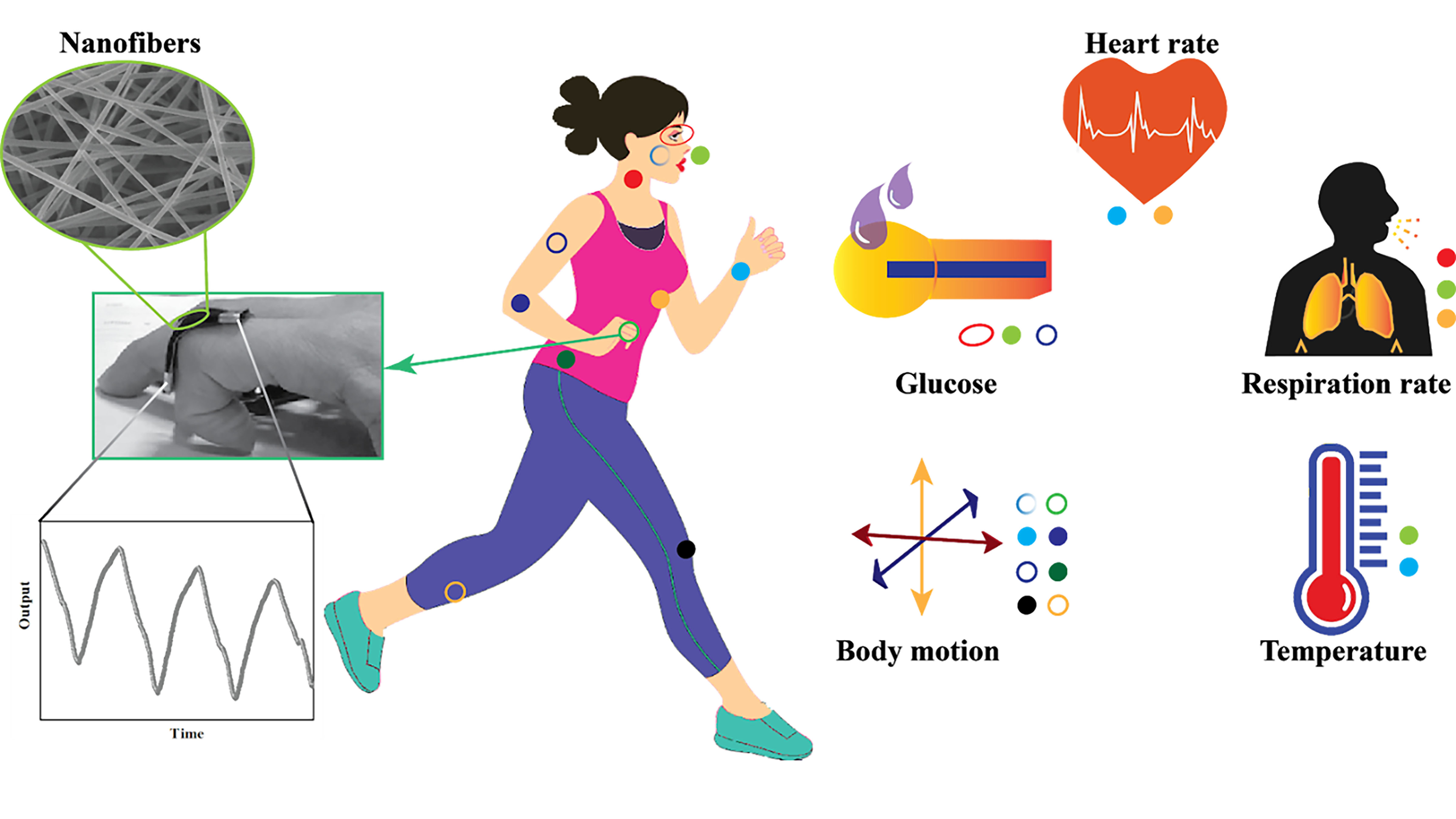
Imitation Mosquito Ears Help Identify Mosquito Species and Sex
Using an imitation “ear” modeled on the organs that mosquitos use to hear, researchers have identified a mosquito’s species and sex using sound — just like mosquitos do themselves. The researchers hope this bioinspired detector could someday be used in the field to save lives by aiding in more selective pesticide use and possibly preventing mosquitos from mating. A presentation of the new research will be given as part of the 179th ASA Meeting.
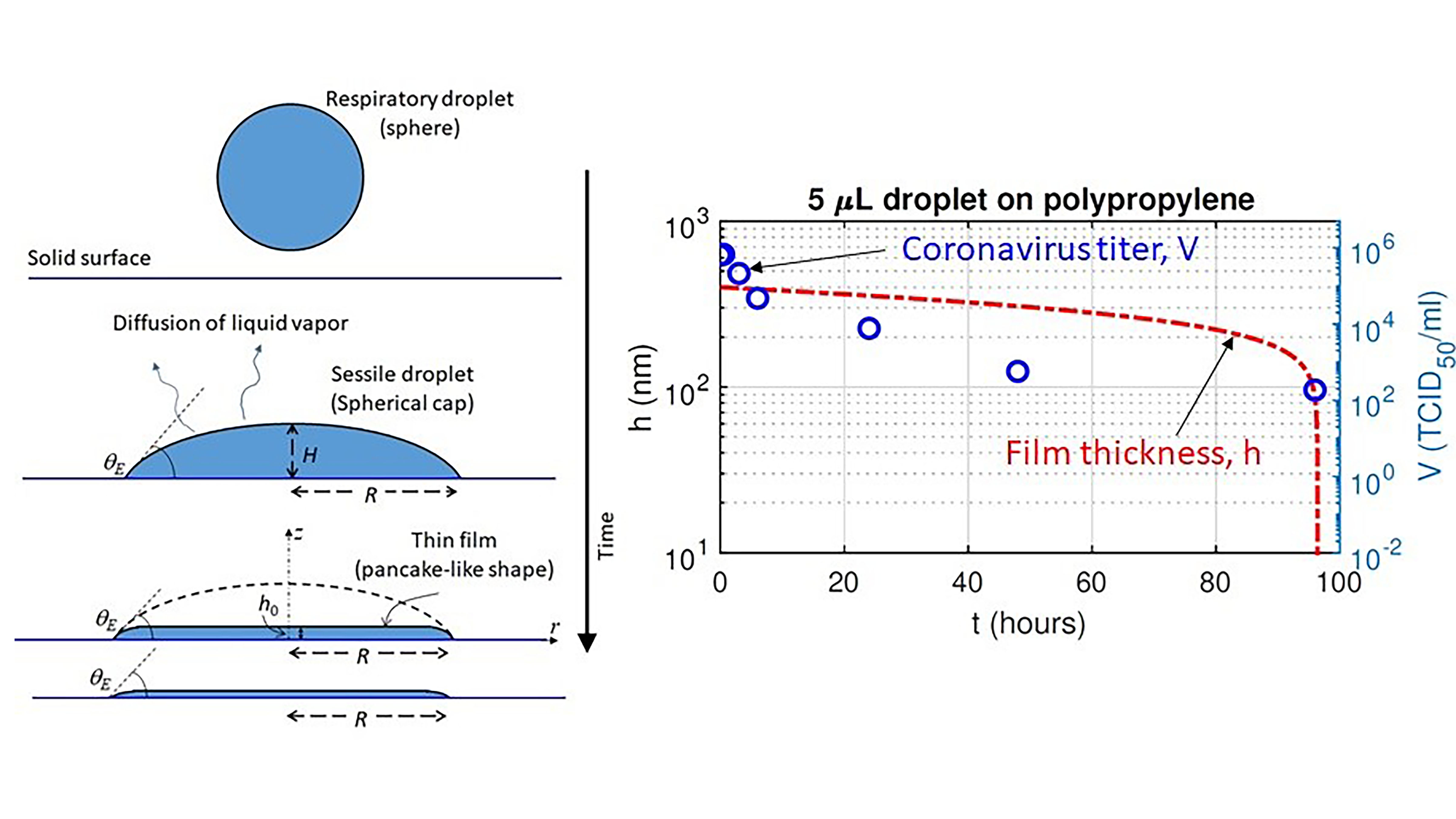
COVID-19 Virus Survives on Surfaces Within Thin Film
To find out how the COVID-19 virus survives on surfaces, researchers in India are exploring the drying times of thin liquid films that persist on surfaces after most respiratory droplets evaporate. While the drying time of typical respiratory droplets is on the order of seconds, the survival time of the COVID-19 virus was found to be on the order of hours. In Physics of Fluids, the researchers describe how a nanometers-thick liquid film clings to the surface, allowing the virus to survive.
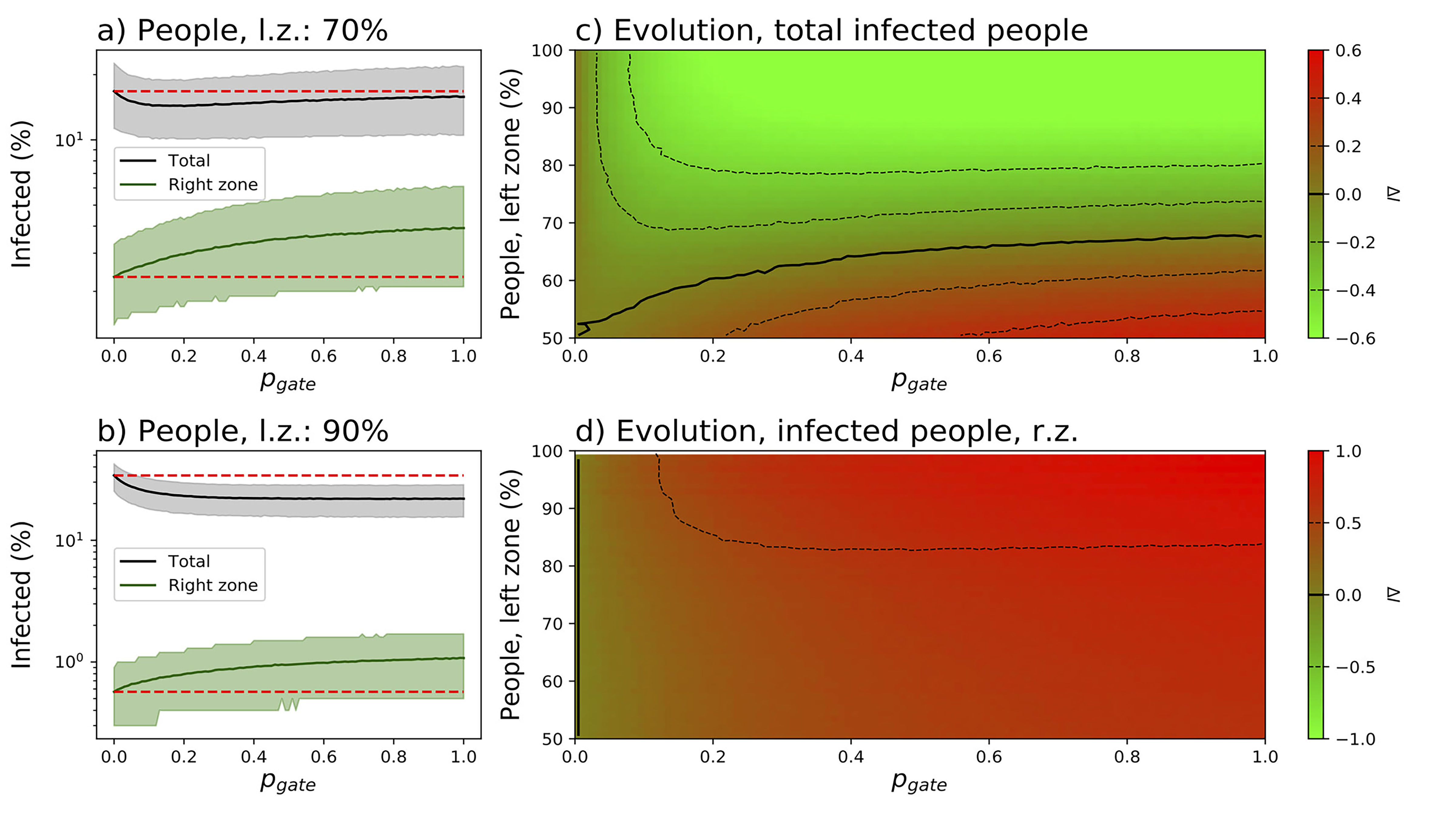
In a Pandemic, Migration Away from Dense Cities More Effective than Closing Borders
During the COVID-19 pandemic, closing national borders and borders between states and regions has been prevalent. But does it help? In a paper in Chaos, researchers decided to put this hypothesis to the test and discover if confinement and travels bans are really effective ways to limit the spread of a pandemic disease. Specifically, they focused on the movement of people from larger cities to smaller ones and tested the results of this one-way migration.

Plasma Treatments Quickly Kill Coronavirus on Surfaces
Researchers from UCLA believe using plasma could promise a significant breakthrough in the fight against the spread of COVID-19. In Physics of Fluids, modeling conducted showed strains of the coronavirus on surfaces like metal, leather, and plastic were killed in as little as 30 seconds of treatment with argon-fed, cold atmospheric plasma. The researchers used an atmospheric pressure plasma jet they built with a 3D printer to spray surfaces that were treated with SARS-CoV-2 cultures.
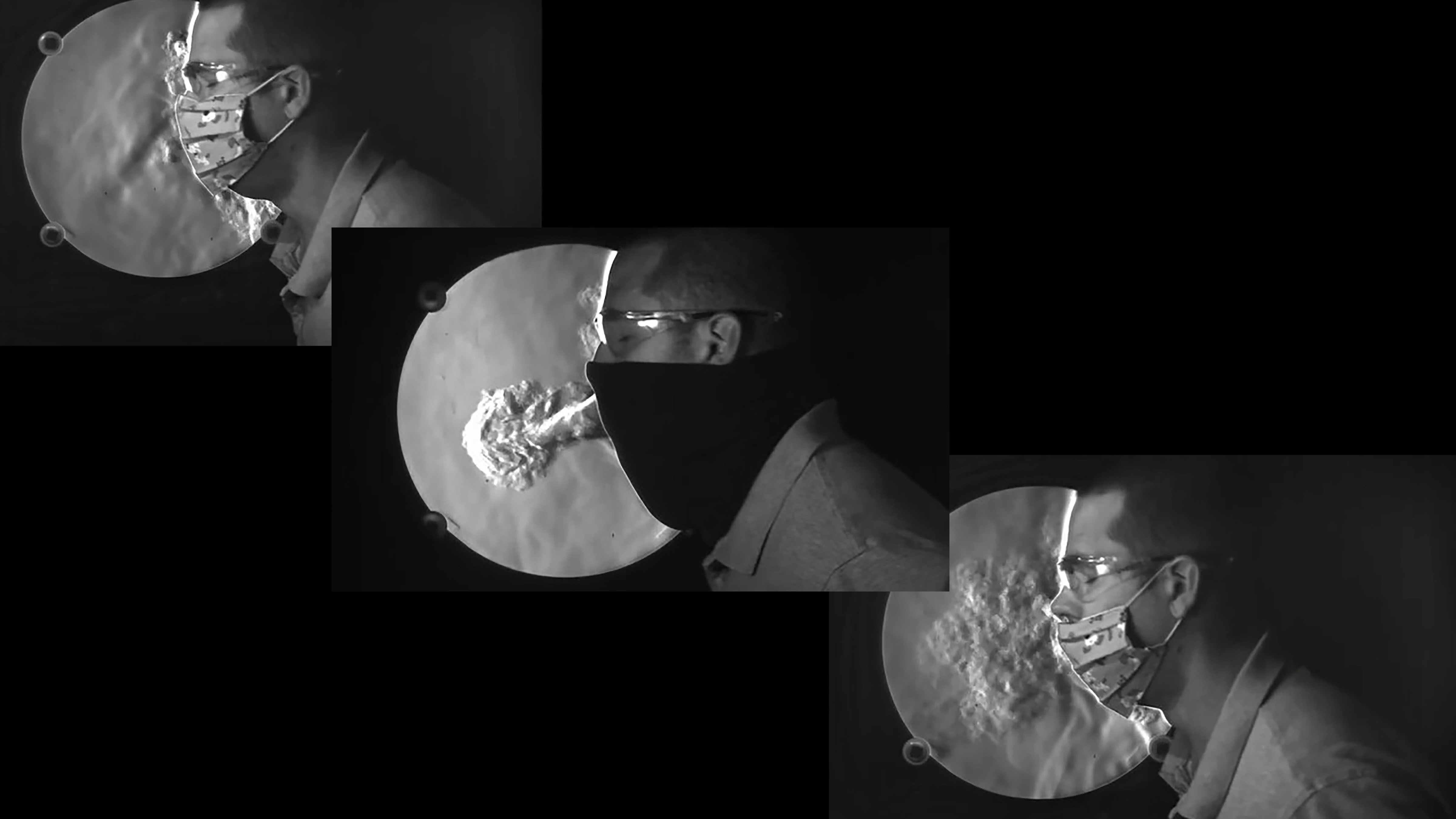
Valves on N95 Masks Do Not Filter Exhaled Droplets
Matthew Staymates, fluid dynamicist at the National Institute of Standards and Technology, is studying different mask types to determine which are the most effective at reducing disease transmission. In Physics of Fluids, he describes exploring the basic flow dynamics of N95 masks with or without exhalation valves. To do this, he generates stunning video from his schlieren imaging, a method to visualize the fluid flow away from the surface of an object, and light scattering.
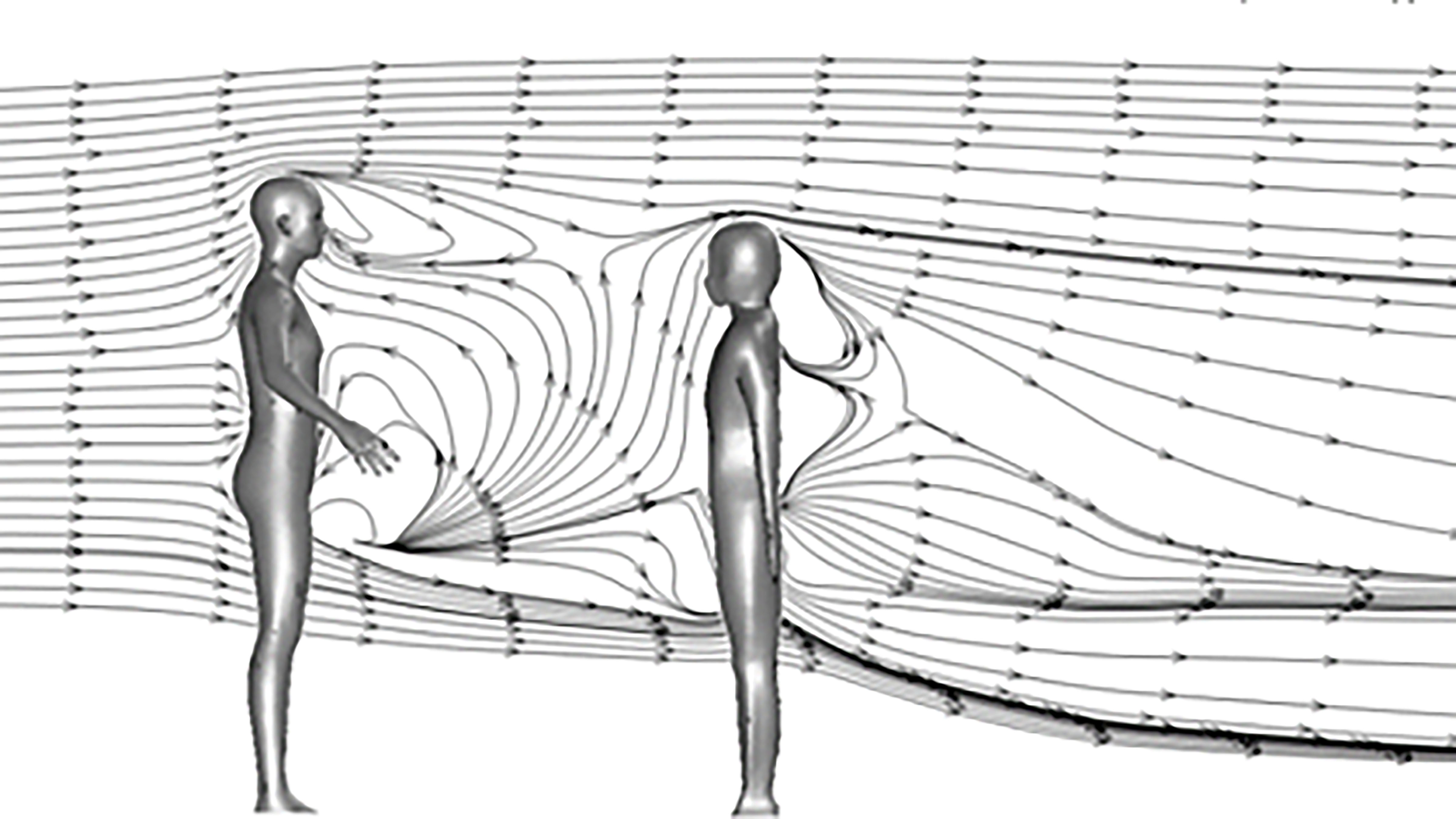
Tracking Flight Trajectory of Evaporating Cough Droplets
The ongoing COVID-19 pandemic has led many to study airborne droplet transmission in different conditions and environments, and in Physics of Fluids, researchers from A*STAR conducted a numerical study on droplet dispersion using high fidelity air flow simulation. The scientists found a single 100-micrometer cough droplet under wind speed of 2 meters per second can travel up to 6.6 meters and even further under dry air conditions due to droplet evaporation.
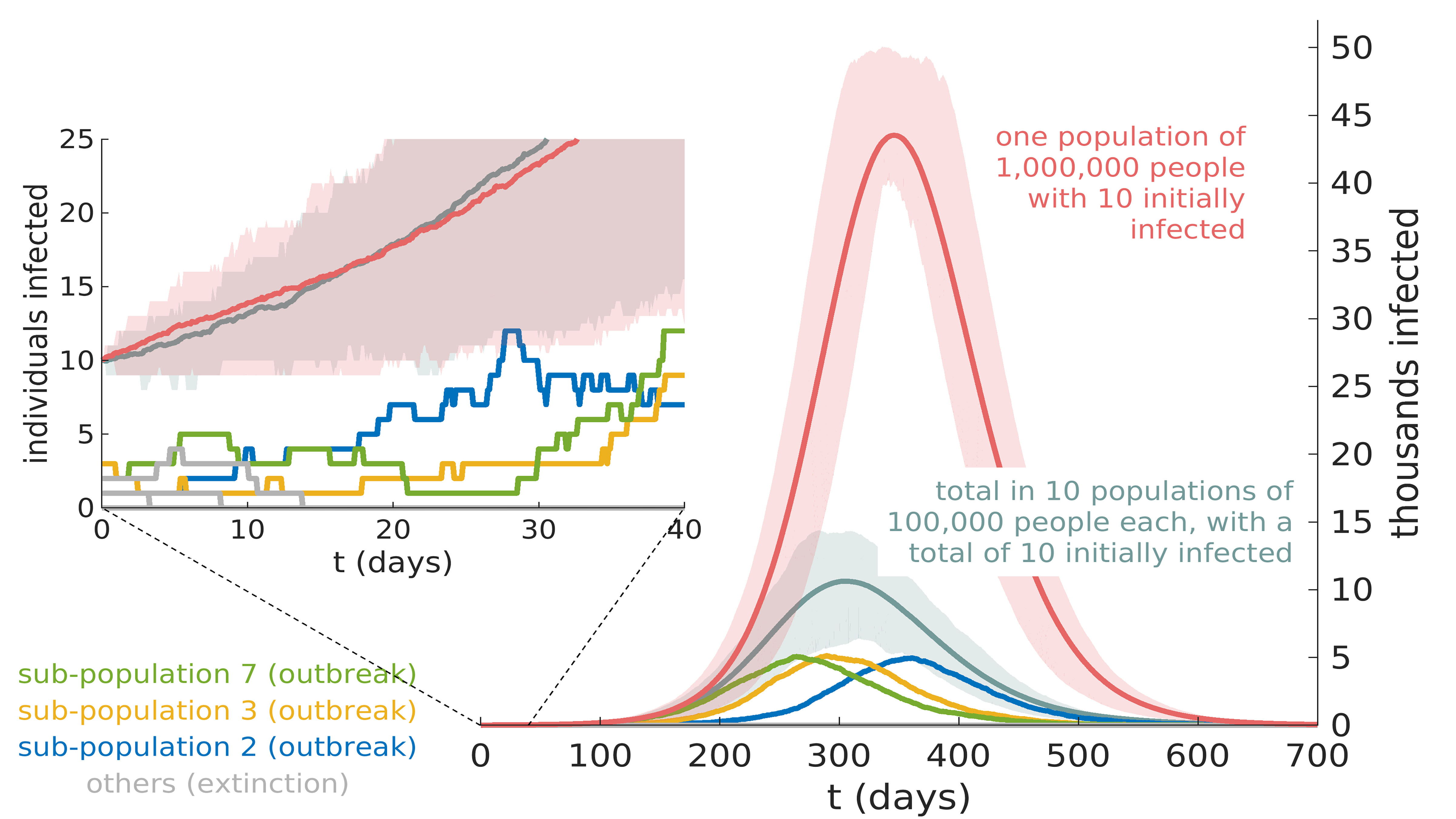
Random Effects Key to Containing Epidemics
To control an epidemic, authorities will often impose varying degrees of lockdown. In the journal Chaos, scientists have discovered, using mathematics and computer simulations, why dividing a large population into multiple subpopulations that do not intermix can help contain outbreaks without imposing contact restrictions within those local communities. When infection numbers are high, random effects can be ignored. But subdividing a population can create communities so small that the random effects matter.

COVID-19 Cough Clouds in Closed Spaces
As the pandemic continues, researchers have increasingly focused on the extent to which respiratory droplets carrying the coronavirus travel and contaminate the air after an infected person coughs. While scientists have studied the properties of air at the mouth, less is known about how these properties change as the cough cloud travels. In Physics of Fluids, researchers estimate the evolving volume of the cough cloud and quantify the reduction in its volume in the presence of a face mask.

Interactions Within Larger Social Groups Can Cause Tipping Points in Contagion Flow
Contagion processes, such as opinion formation or disease spread, can reach a tipping point, where the contagion either rapidly spreads or dies out. When modeling these processes, it is difficult to capture this complex transition. In the journal Chaos, researchers studied the parameters of these transitions by including three-person group interactions in a contagion model called the susceptible-infected-susceptible model. In this model, an infected person who recovers from an infection can be reinfected.
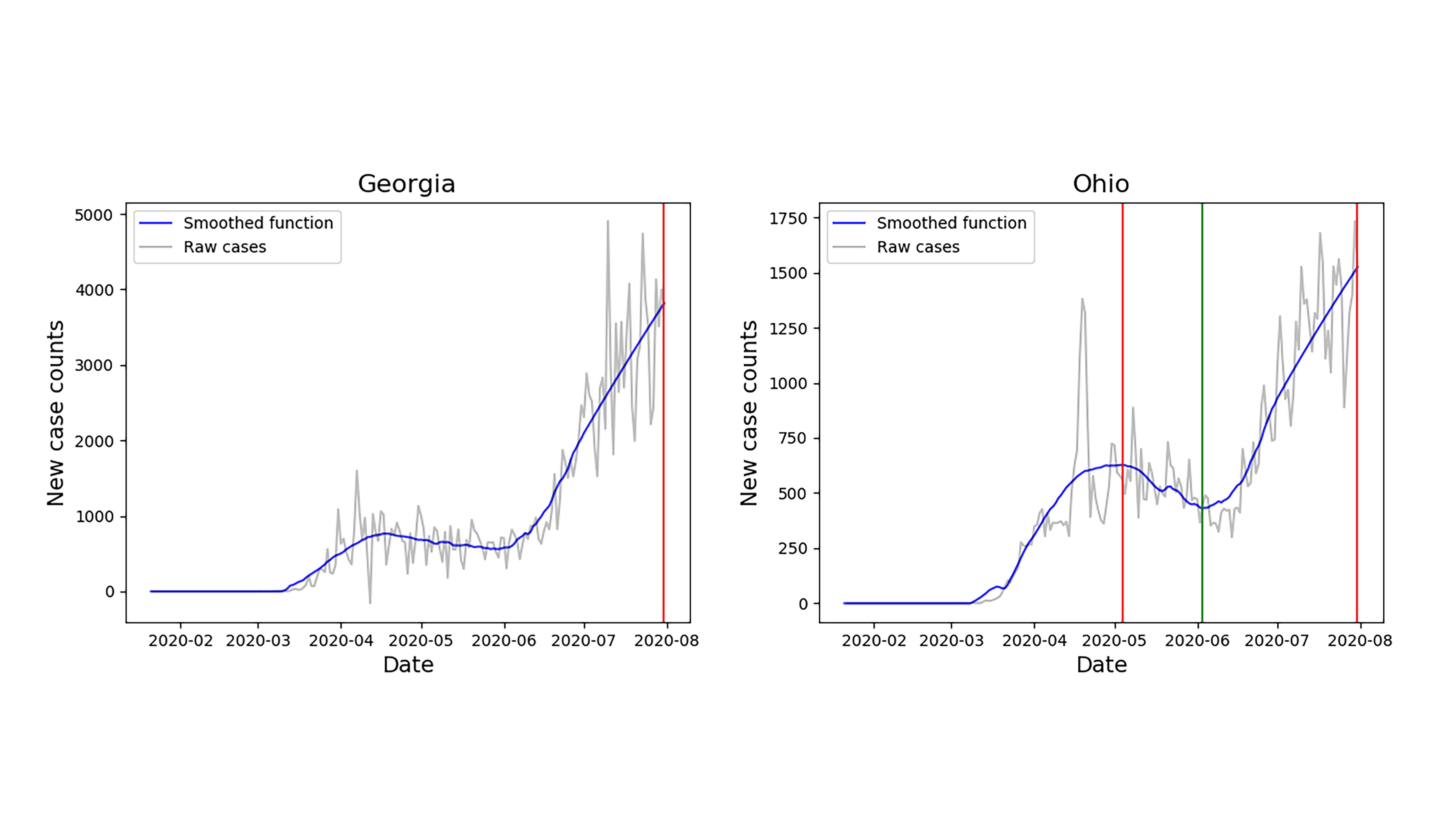
COVID-19: Second Wave for Some; Others Remain in First Wave
As the COVID-19 pandemic continues, some locations have experienced decreasing numbers of cases followed by an increase. In the journal Chaos, mathematicians report a method to analyze these numbers for evidence of a first or second wave. The authors studied data from all 50 U.S. states plus D.C. for the seven-month period from Jan. 21 to July 31. They found 31 states and D.C. were experiencing a second wave as of the end of July.
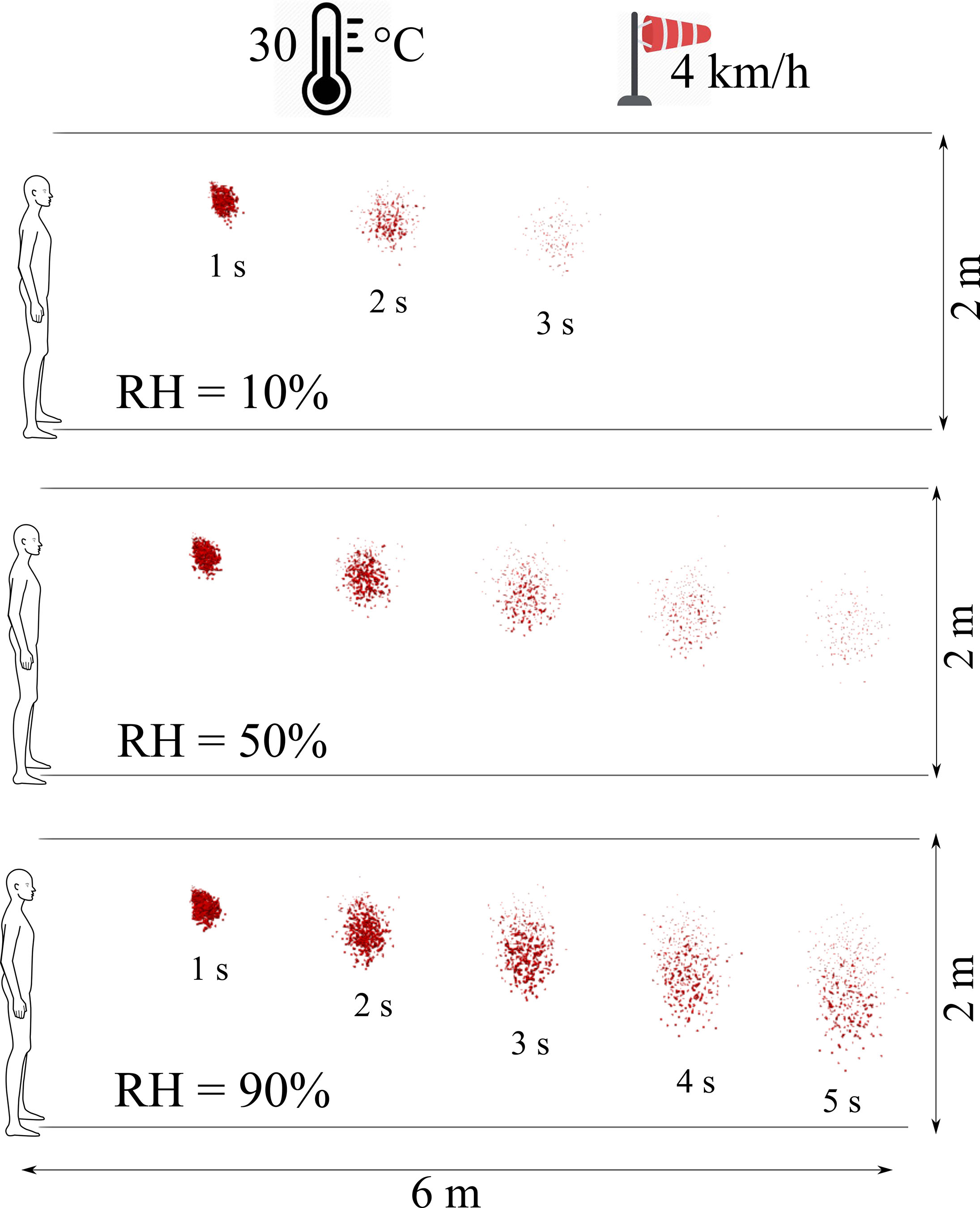
Evaporation Critical to Coronavirus Transmission as Weather Changes
As COVID-19 cases continue to rise, it is increasingly urgent to understand how climate impacts the spread of the coronavirus, particularly as winter virus infections are more common and the northern hemisphere will soon see cooler temperatures. In Physics of Fluids, researchers studied the effects of relative humidity, environmental temperature, and wind speed on the respiratory cloud and virus viability. They found a critical factor for the transmission of the infectious particles is evaporation.
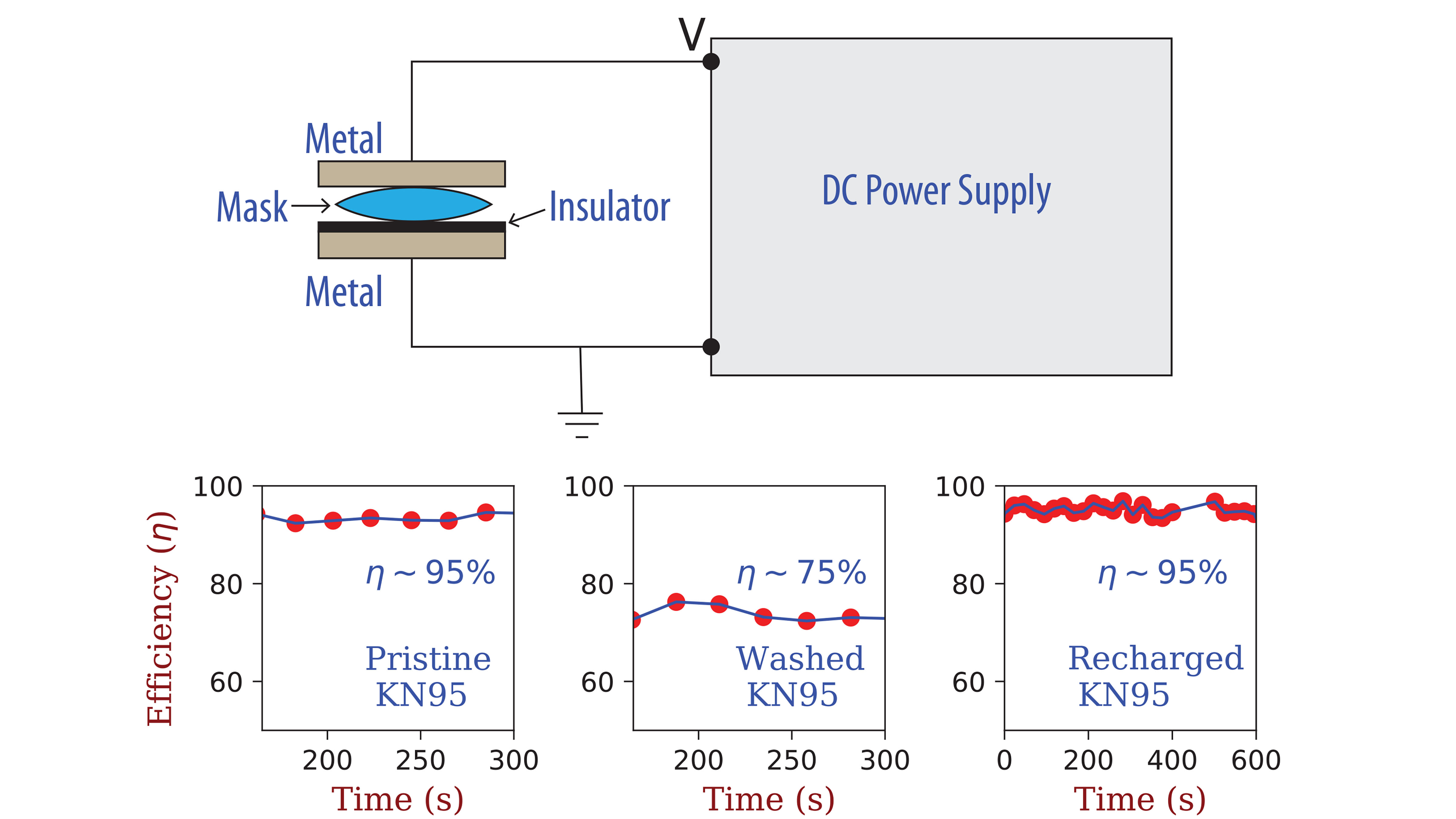
Recharging N95 Masks for Continued Usage
N95 masks achieve 95% efficiency at filtering out tiny 0.3-micron particles, while maintaining reasonable breathability, thanks to a layer of polypropylene fibers incorporating electrical charges to attract particles. Extended usage and decontamination, provoked by severe shortages during the pandemic, can easily remove the charges and degrade filtration efficiency. In Physics of Fluids, researchers share a method to restore the filtration efficiency of N95 masks to out-of-box levels, as long as the mask is not structurally compromised.
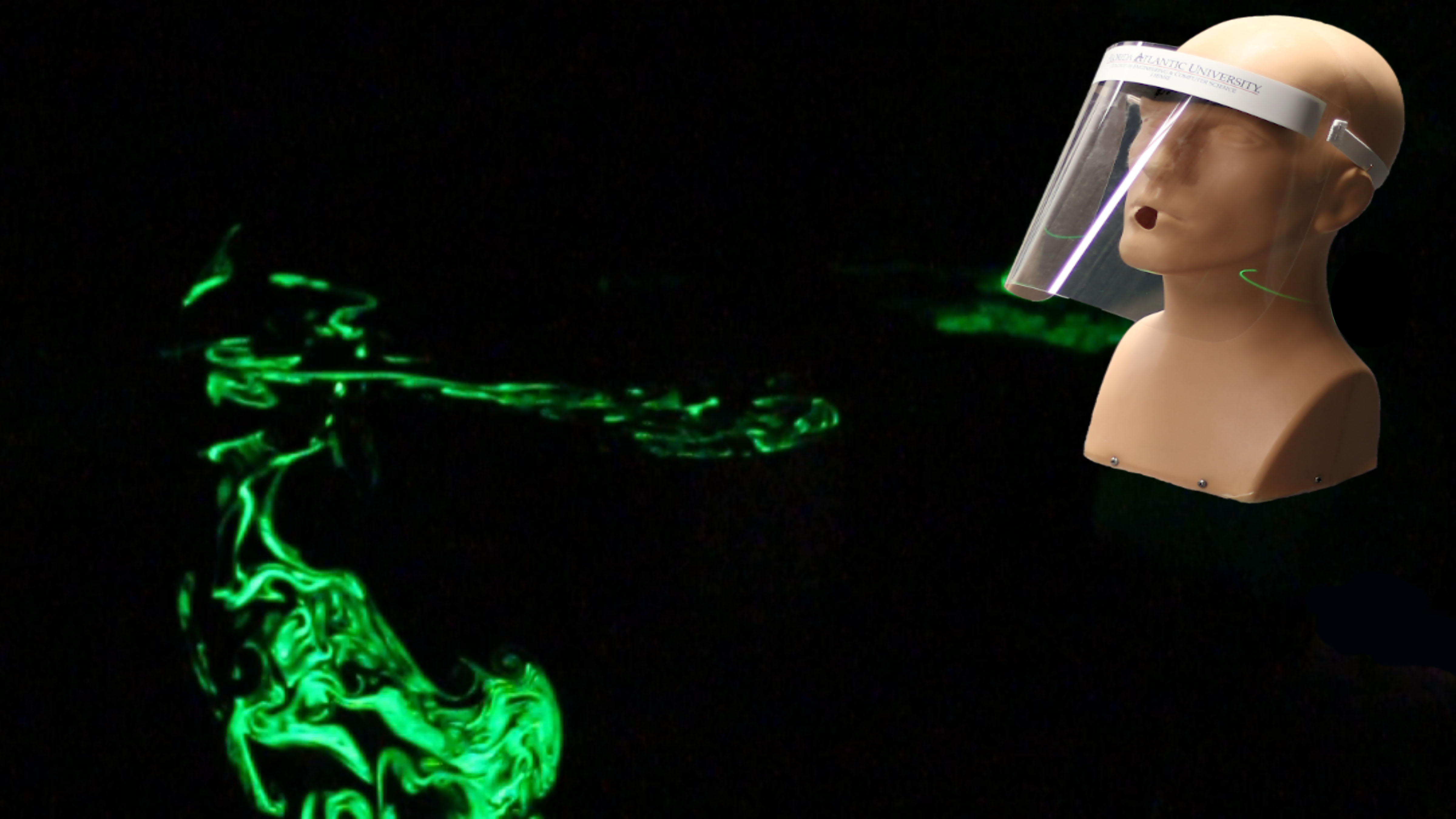
Face Shields, Masks with Valves Ineffective Against COVID-19 Spread
As countries experience a steep surge in COVID-19 infections, face masks have become increasingly accepted as an effective means for combating the spread of the disease when combined with social distancing and frequent hand-washing. Increasingly people are using clear plastic face shields and masks with exhalation valves instead of regular cloth or surgical masks, since they can be more comfortable. In a paper published in Physics of Fluids, researchers investigate whether they are as effective.
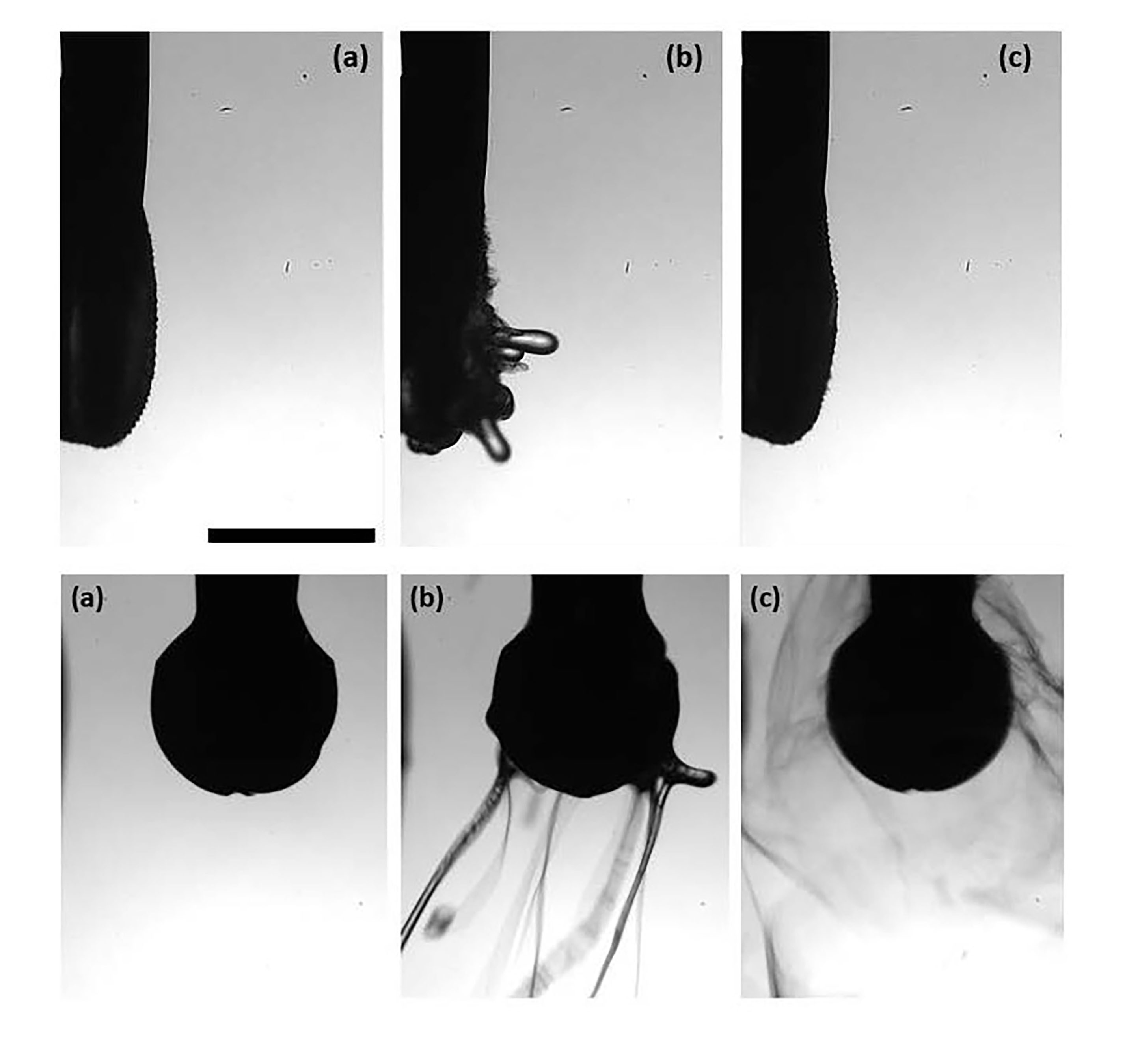
Polymers Prevent Potentially Hazardous Mist During Dentist Visit
If the mist in a dentist’s office — sent flying into the air by spinning, vibrating tools — contains a virus or some other pathogen, it is a health hazard for dentists and patients. So researchers in Illinois studied the viscoelastic properties of food-grade polymers and discovered that the forces of a vibrating tool or dentist’s drill are no match for them. Not only did a small admixture of polymers completely eliminate aerosolization, but it did so with ease.
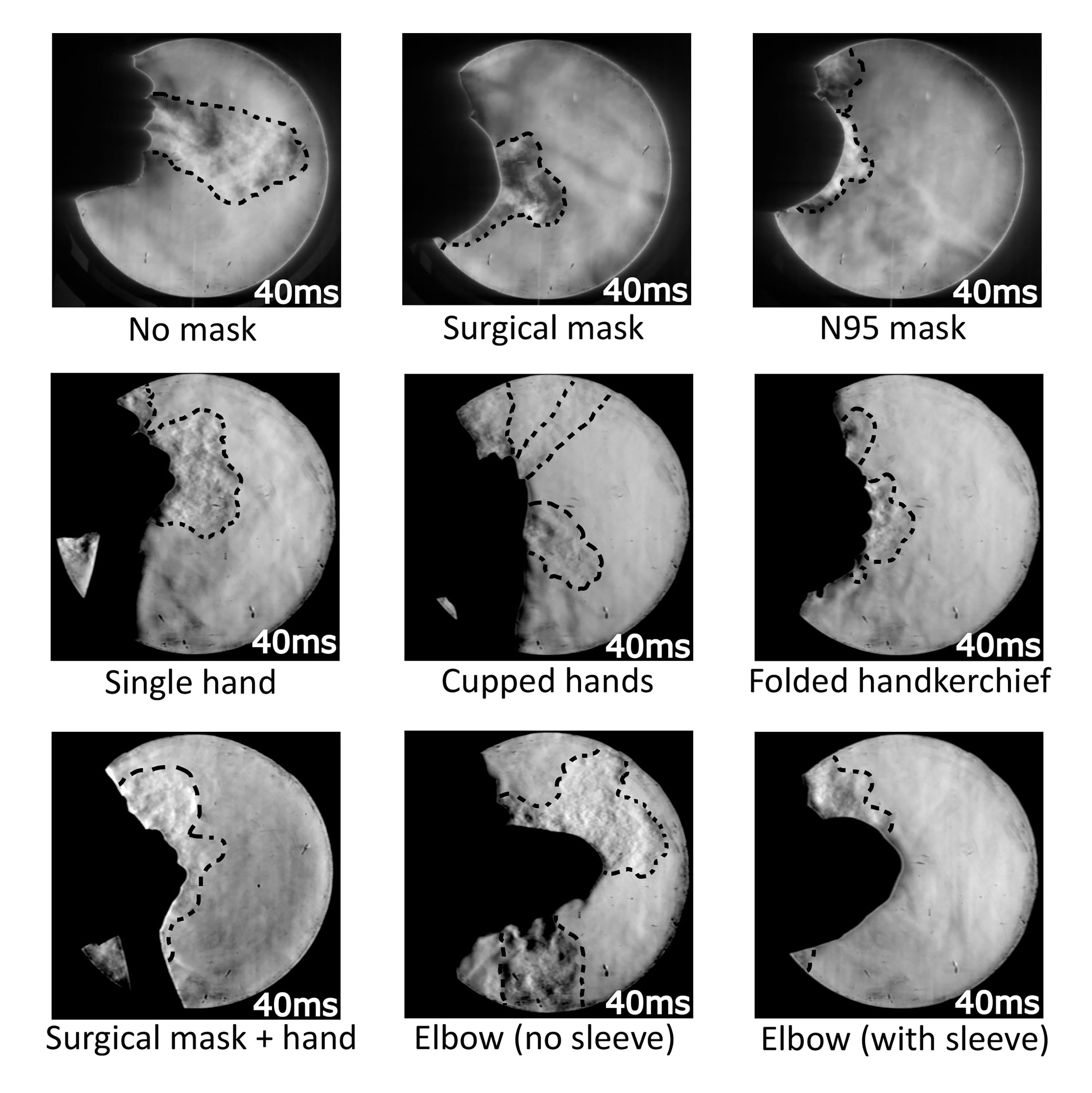
Effectiveness of Cloth Masks Depends on Type of Covering
Months into the COVID-19 pandemic, wearing a mask while out in public has become the recommended practice. However, many still question the effectiveness of this. To allay doubts, Padmanabha Prasanna Simha, from the Indian Space Research Organisation, and Prasanna Simha Mohan Rao, from the Sri Jayadeva Institute of Cardiovascular Sciences and Research, experimentally visualized the flow fields of coughs under various common mouth covering scenarios. They present their findings in the journal Physics of Fluids.
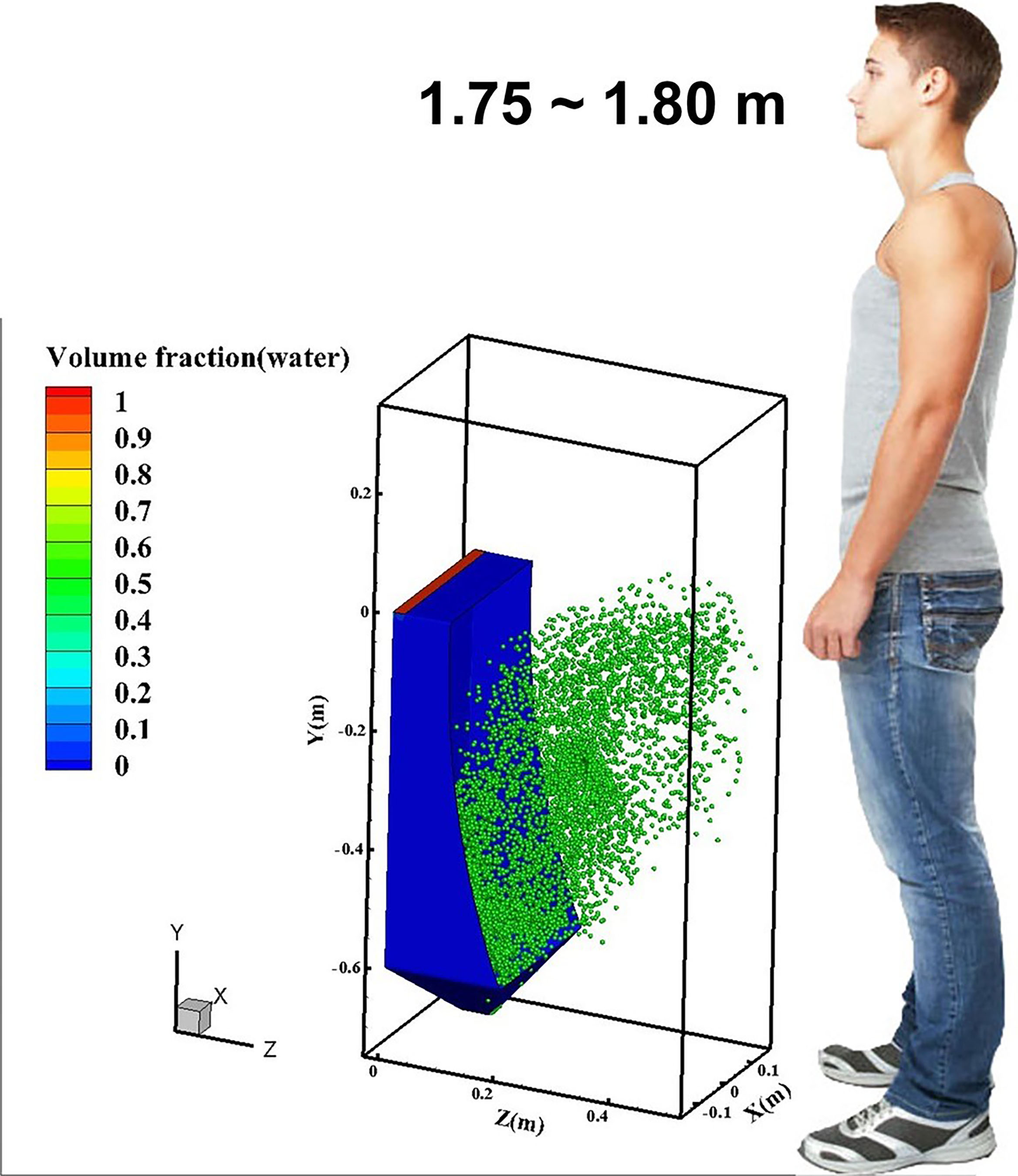
Using A Public Restroom? Mask Up!
Think you don’t need to worry about COVID-19 while using a public restroom? Researchers from Yangzhou University in China recently reported that flushing public restroom toilets can release clouds of virus-laden aerosols for you to potentially inhale. If that’s not cringeworthy enough, after running additional computer simulations, they’ve concluded that flushing urinals does likewise. In Physics of Fluids, the group shares its work simulating and tracking virus-laden particle movements when urinals are flushed.
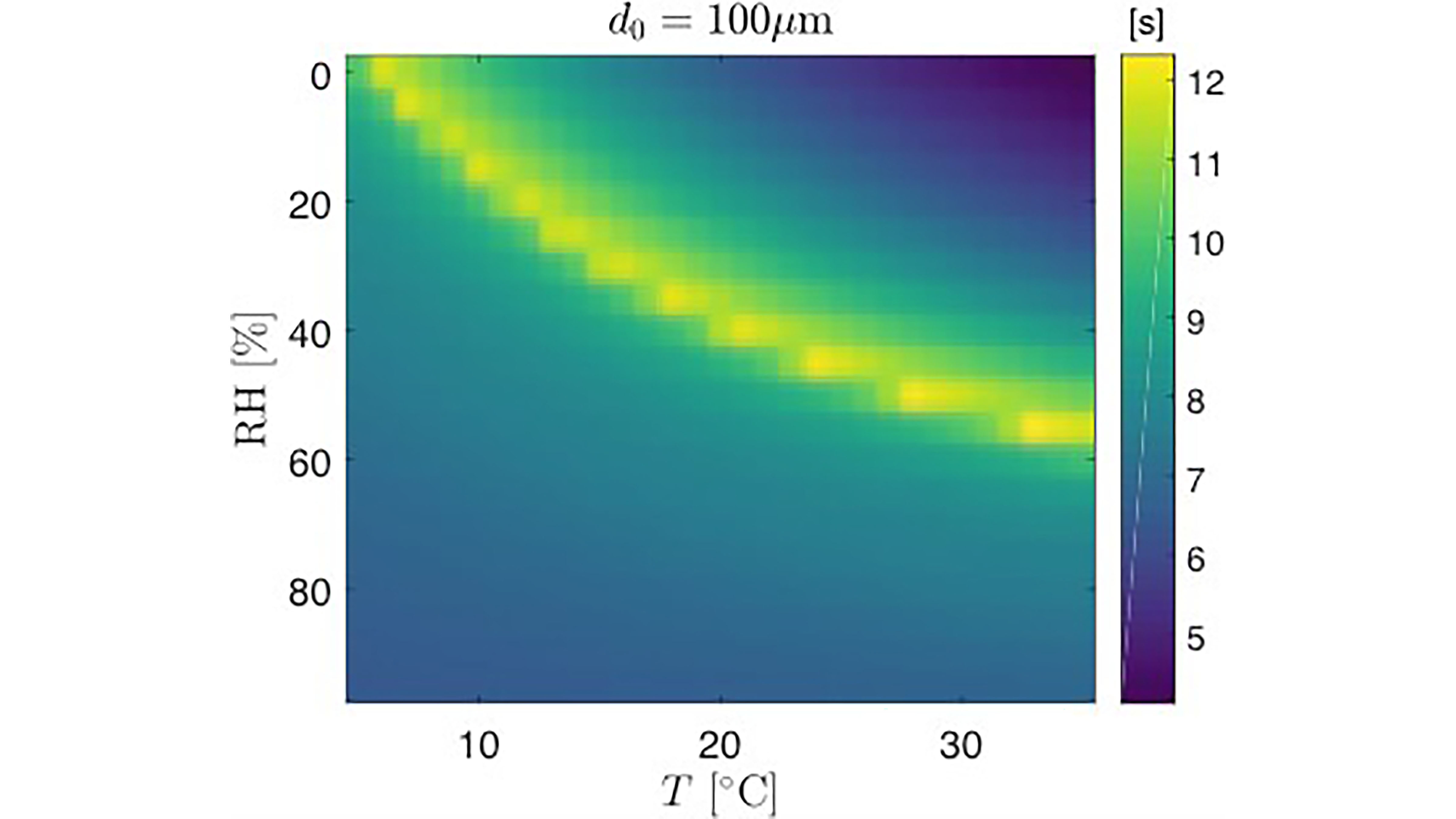
Humid Air Can Extend Lifetime of Virus-Laden Aerosol Droplets
The novel coronavirus that causes COVID-19 is thought to spread through natural respiratory activities, but little is known about how the virus is transported through the air. Scientists report in Physics of Fluids on a study of how airflow and fluid flow affect exhaled droplets that can contain the virus. Their model includes a more accurate description of air turbulence that affects an exhaled droplet’s trajectory. Calculations with their model reveal, among other things, an important and surprising effect of humid air.
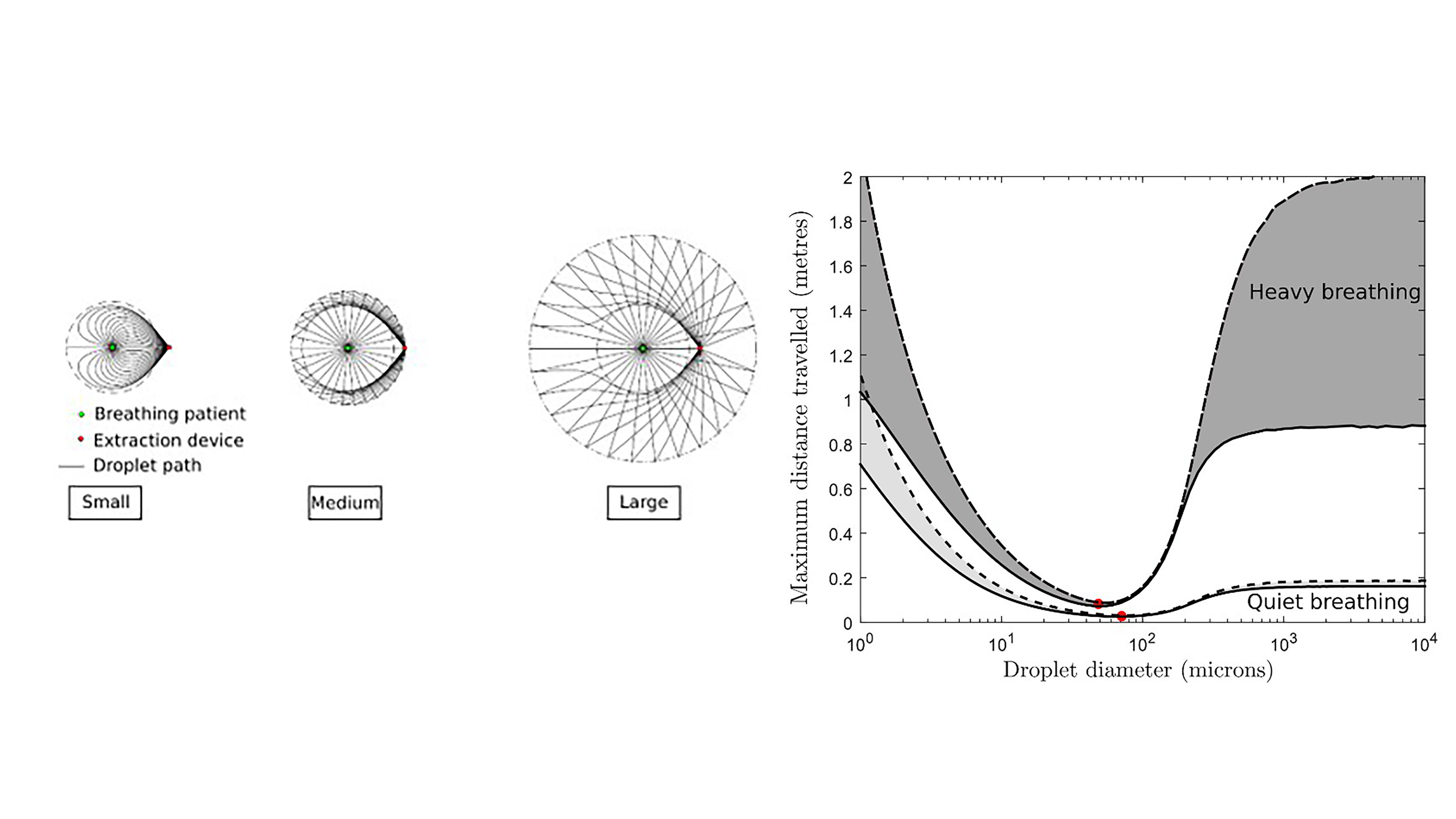
Droplet Spread from Humans Doesn’t Always Follow Airflow
If aerosol transmission of COVID-19 is confirmed to be significant, as suspected, we will need to reconsider guidelines on social distancing, ventilation systems and shared spaces. Researchers in the U.K. believe a better understanding of different droplet behaviors and their different dispersion mechanisms is also needed. In Physics of Fluids, the group presents a model that demarcates differently sized droplets. This has implications for understanding the spread of airborne diseases, because the dispersion tests revealed the absence of intermediate-sized droplets.

Respiratory Droplet Motion, Evaporation and Spread of COVID-19-Type Pandemics
It is well established the COVID-19 virus is transmitted via respiratory droplets. Consequently, much research targets better understanding droplet motion and evaporation. In Physics of Fluids, researchers developed a mathematical model for the early phases of a COVID-19-like pandemic using the aerodynamics and evaporation characteristics of respiratory droplets. The researchers modeled the pandemic dynamics with a reaction mechanism and then compared the droplet cloud ejected by an infected person versus one by a healthy person.
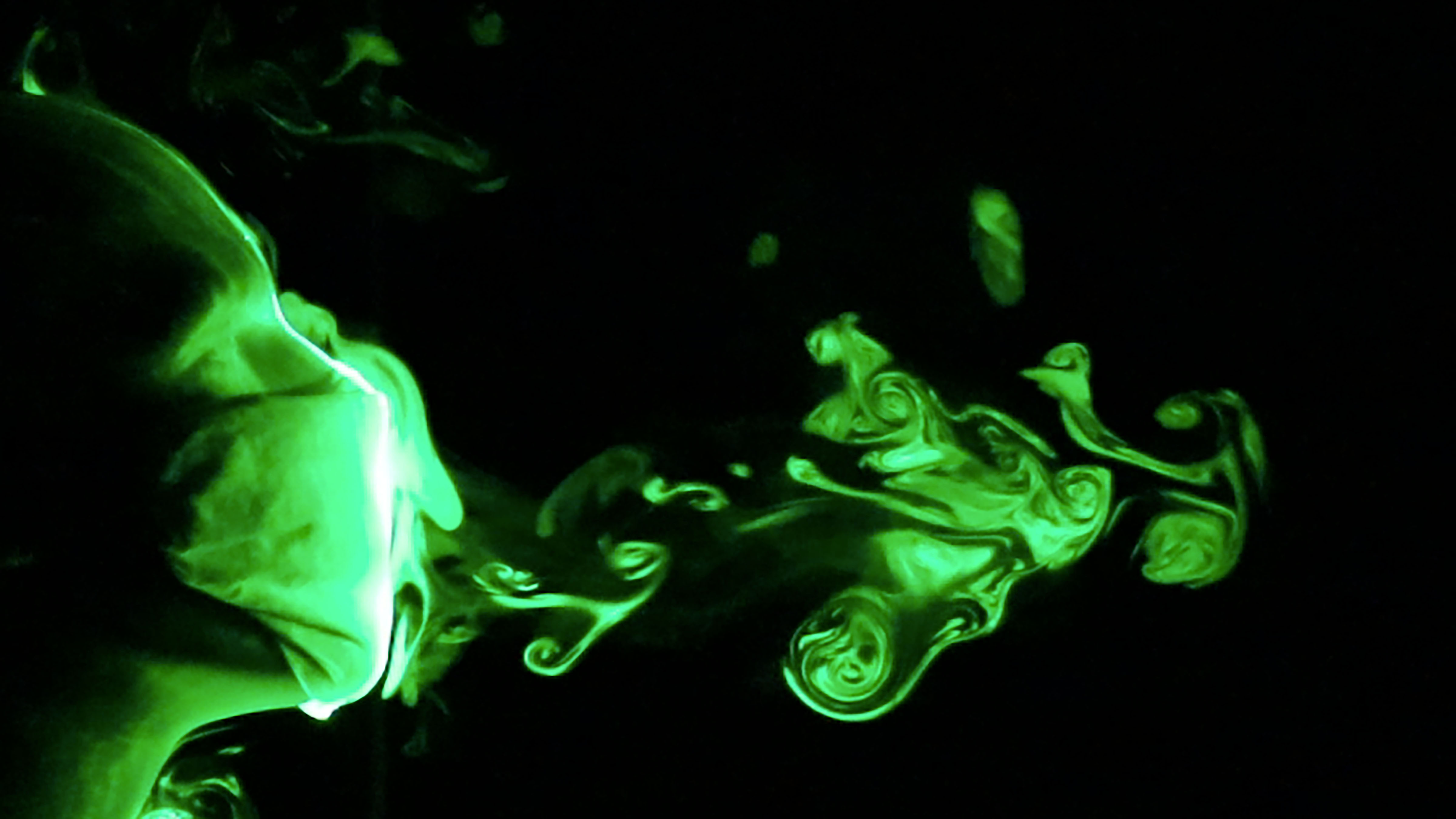
Face Mask Construction, Materials Matter for Containing Coughing, Sneezing Droplets
While the use of face masks in public has been widely recommended by health officials during the current COVID-19 pandemic, there are relatively few specific guidelines pertaining to mask materials and designs. A study in Physics of Fluids looks to better understand which types are best for controlling respiratory droplets that could contain viruses. The team experimented with different choices in material and design to determine how well face masks block droplets as they exit the mouth.
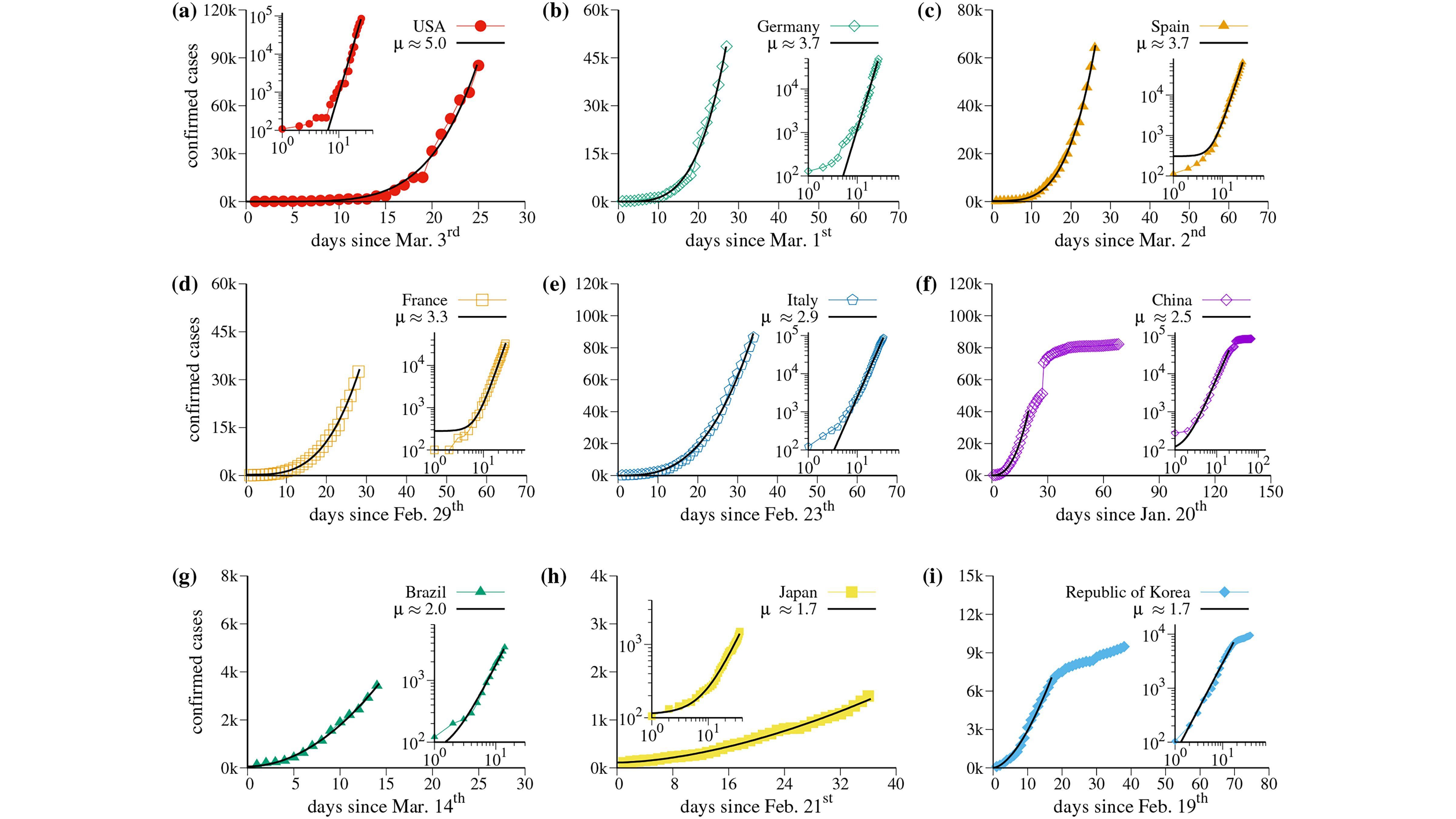
Correlations in COVID-19 Growth Point to Universal Strategies for Slowing Spread
Many months since the first COVID-19 outbreak, countries continue to explore solutions to manage the spread of the virus. Chaos theory researchers analyzed the growth of confirmed cases across four continents to better characterize the spread and examine which strategies are effective in reducing it, and their results, published in Chaos, found the virus commonly grows along a power law curve.